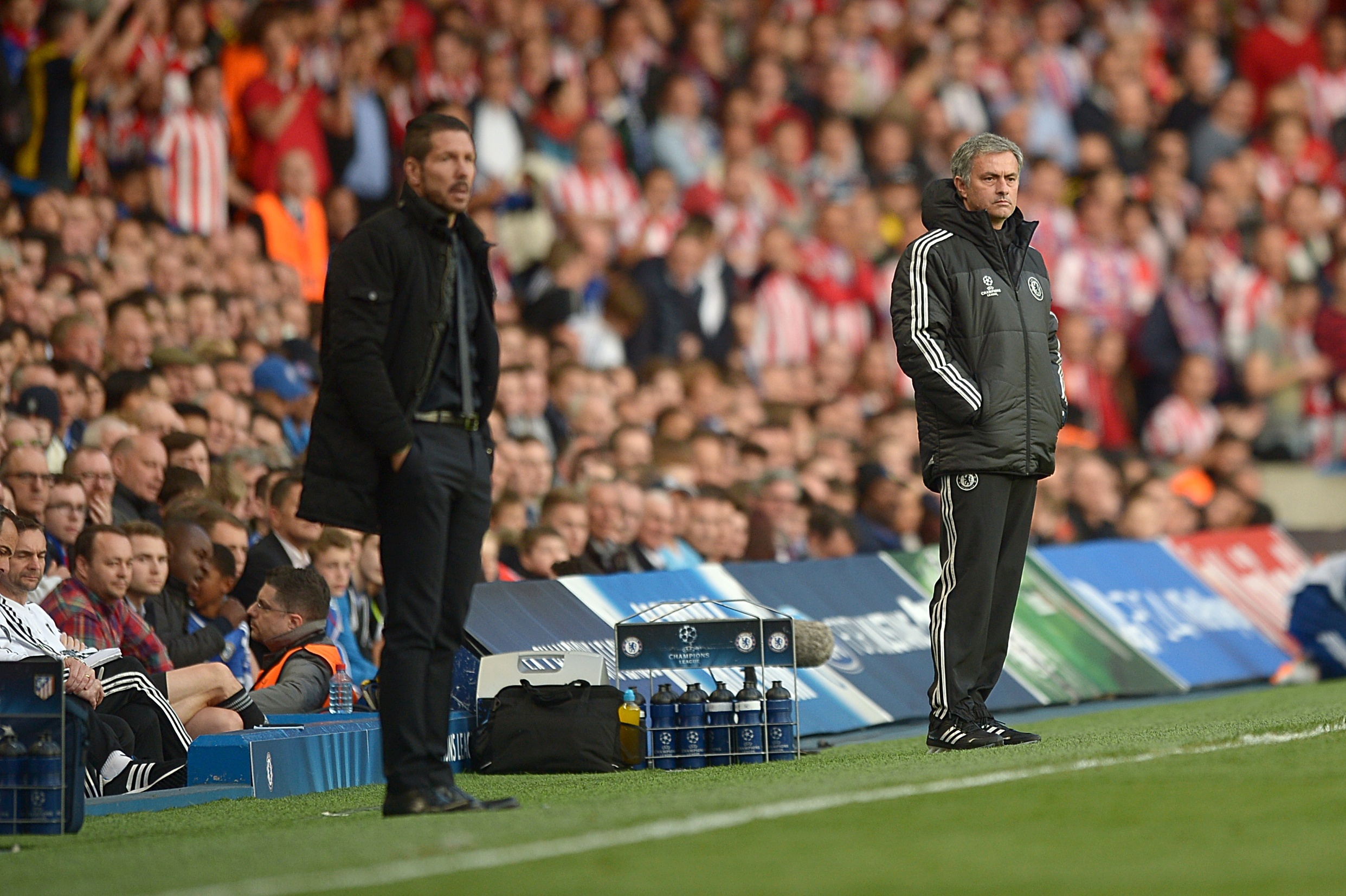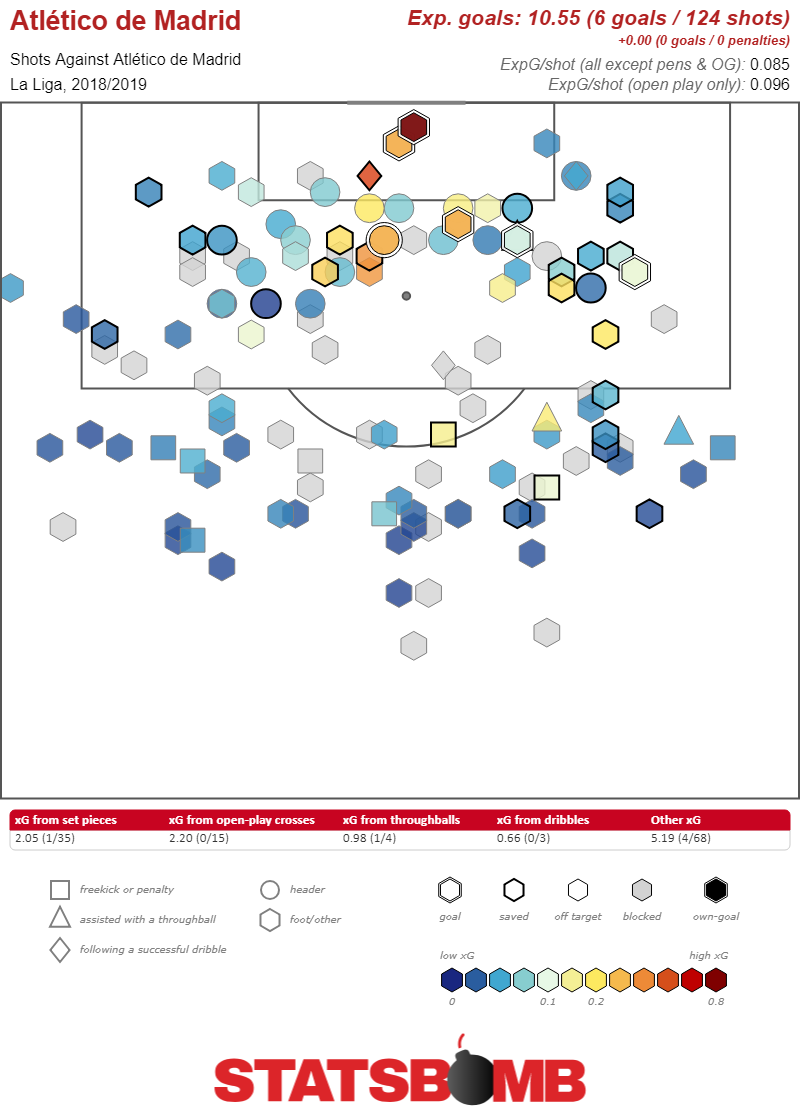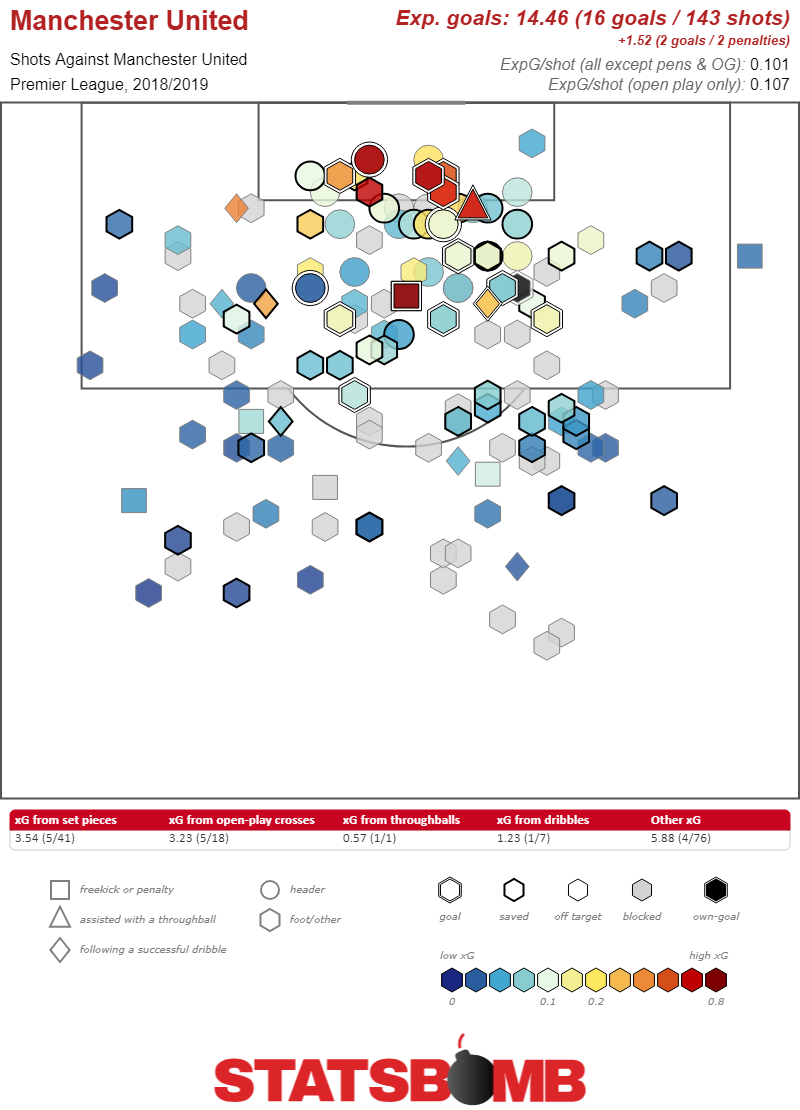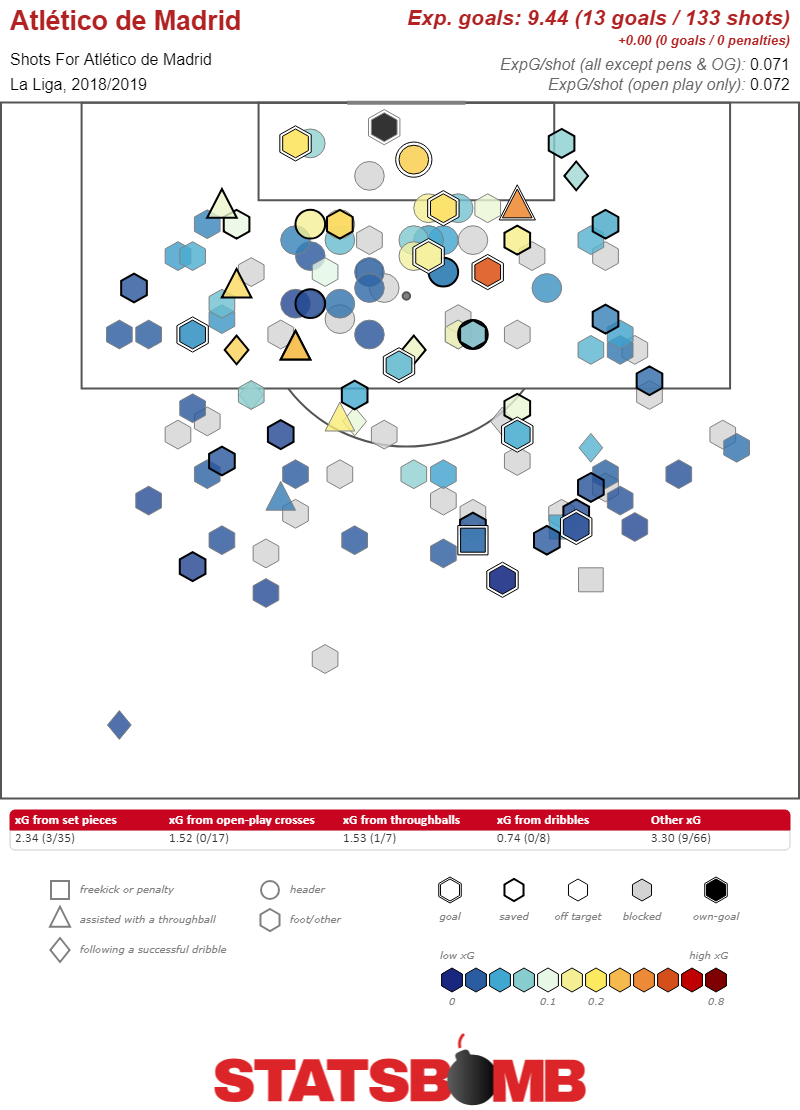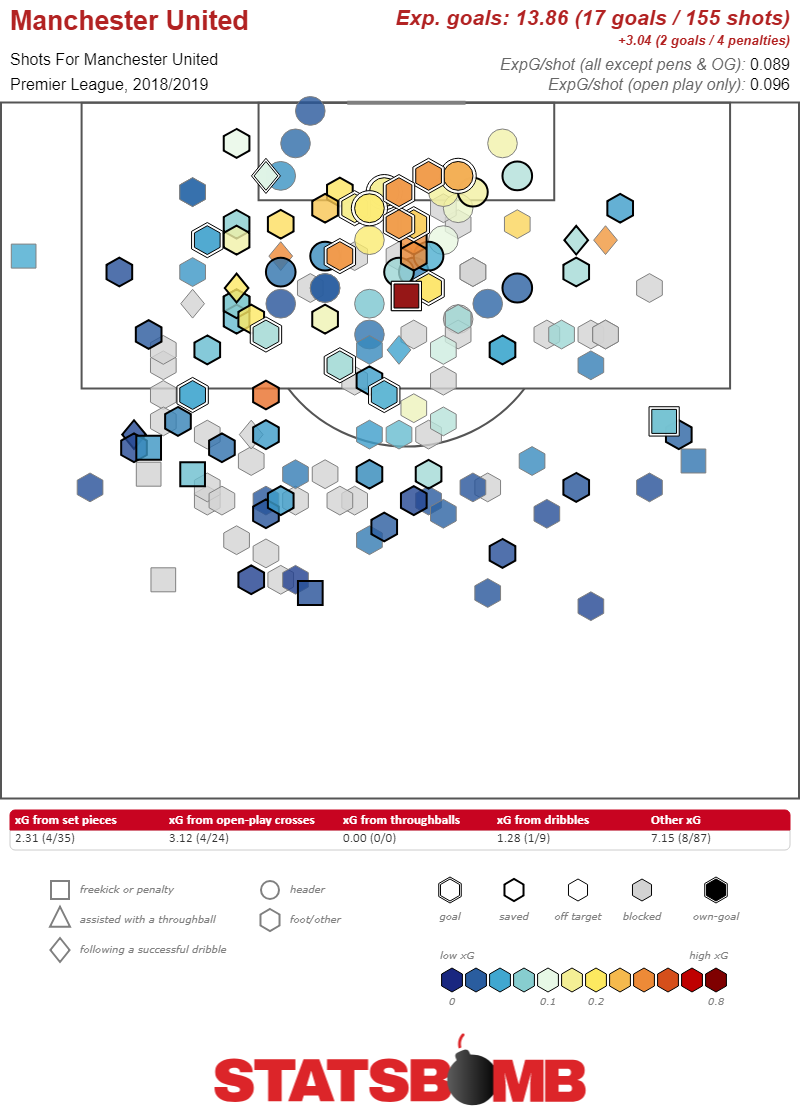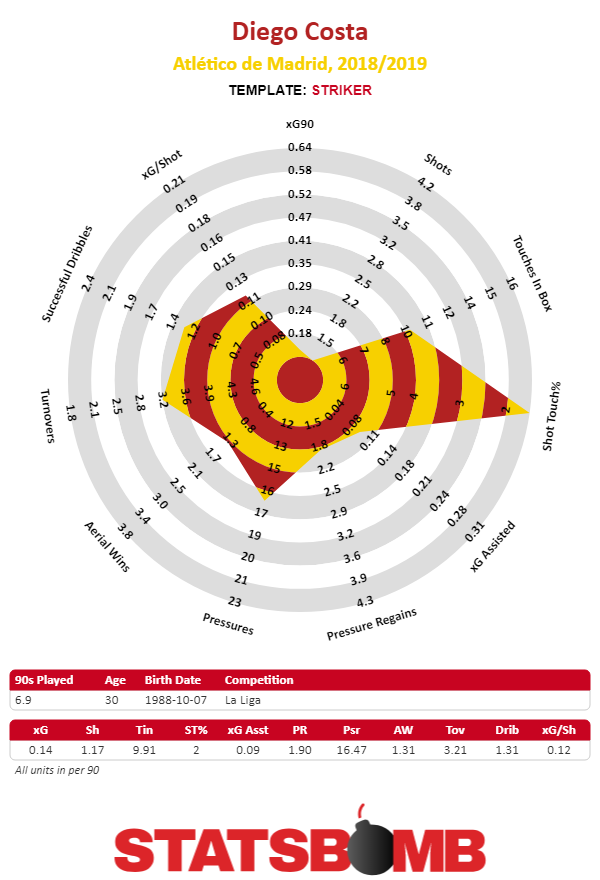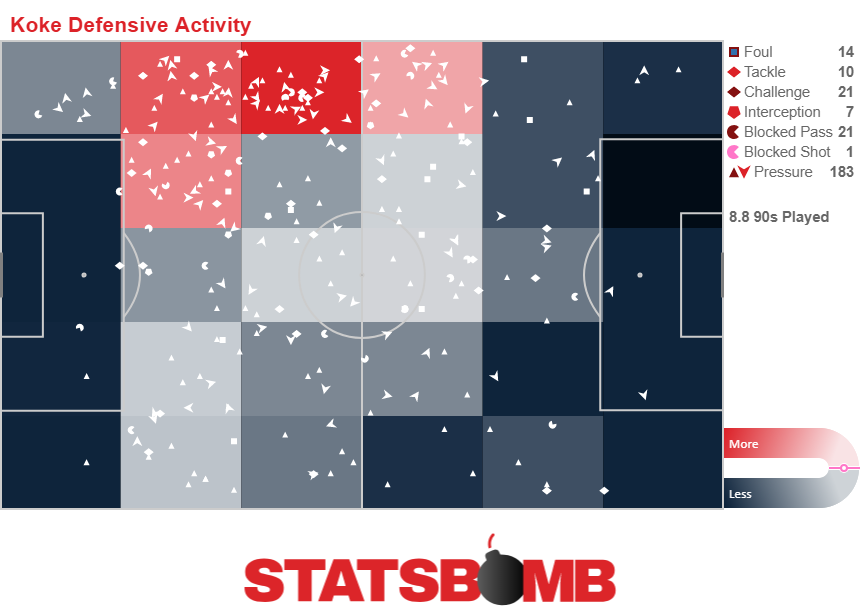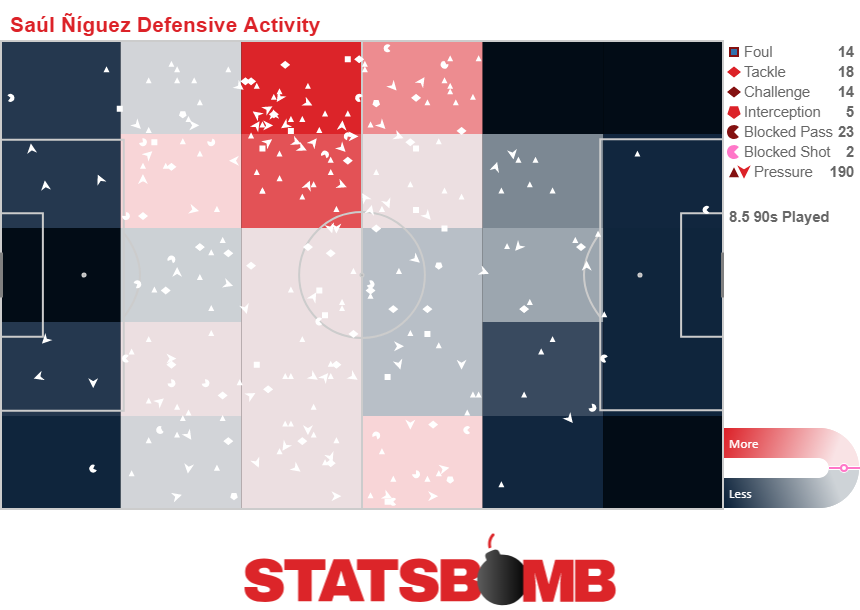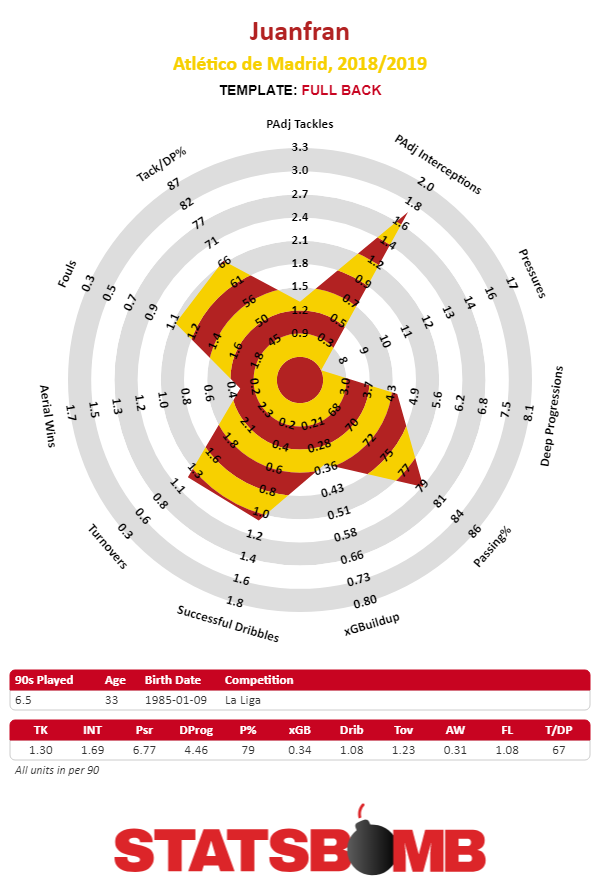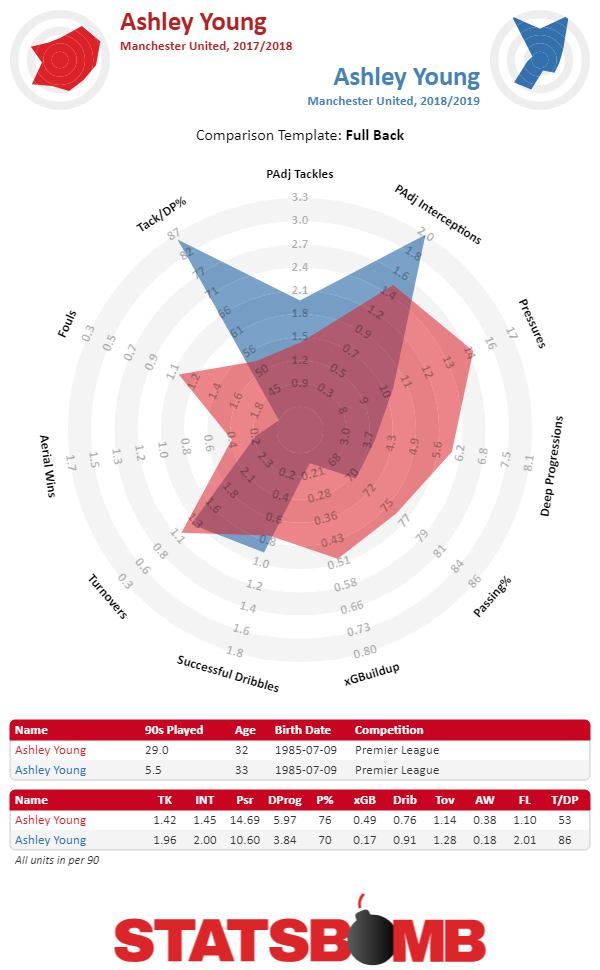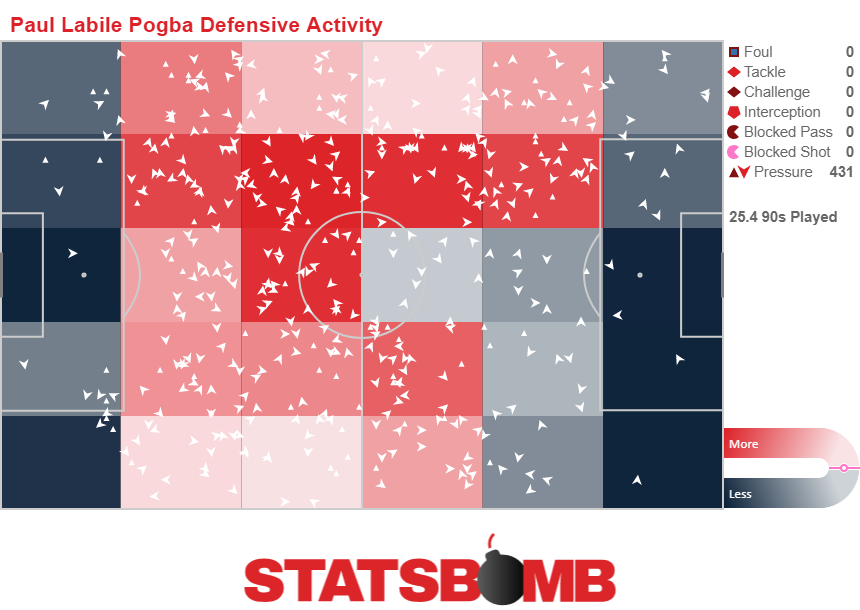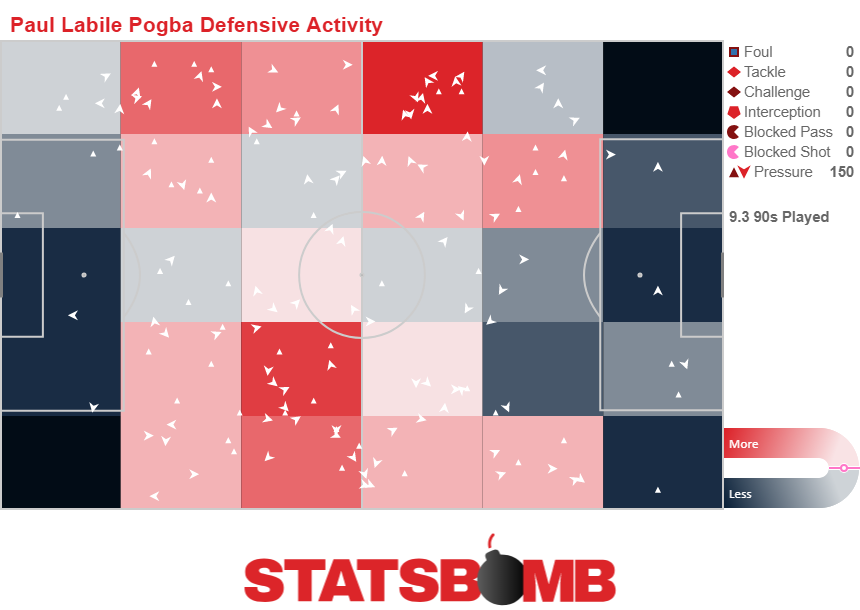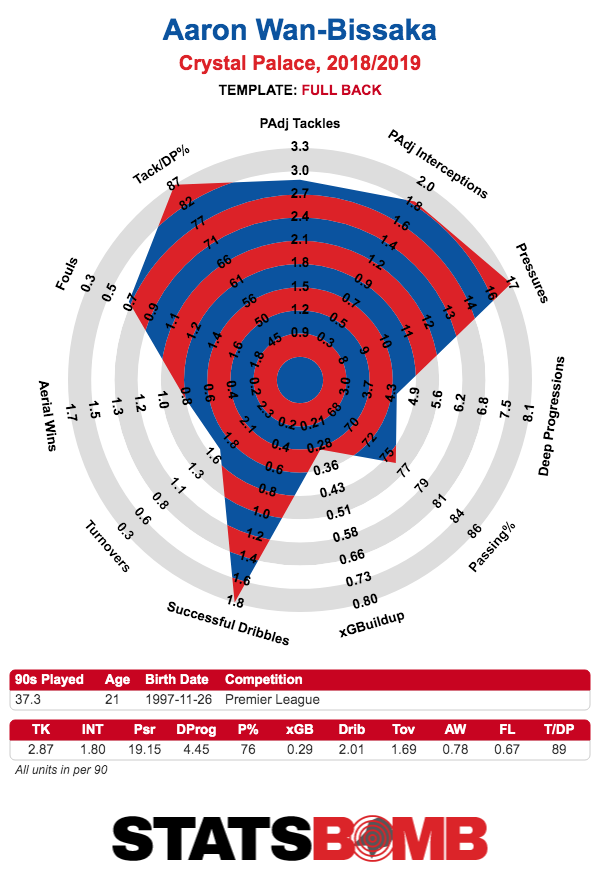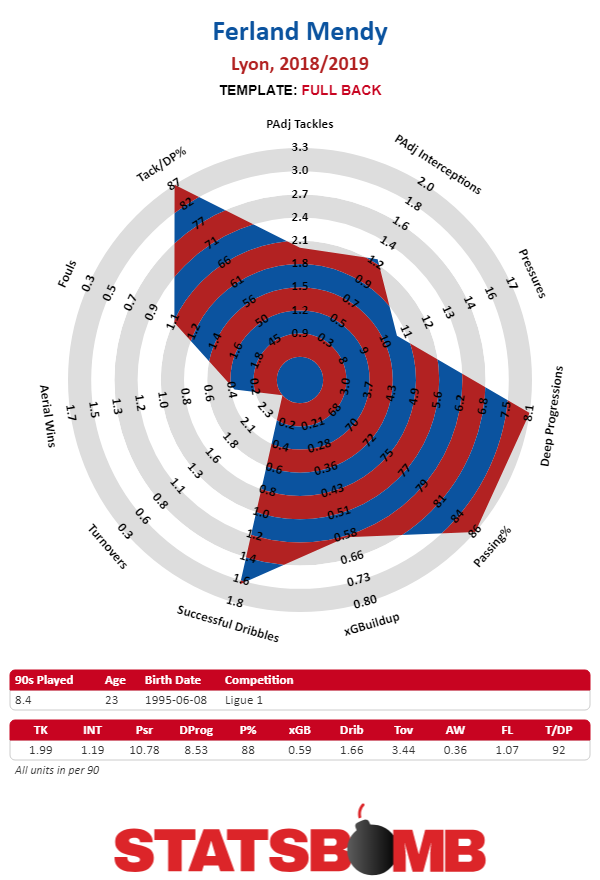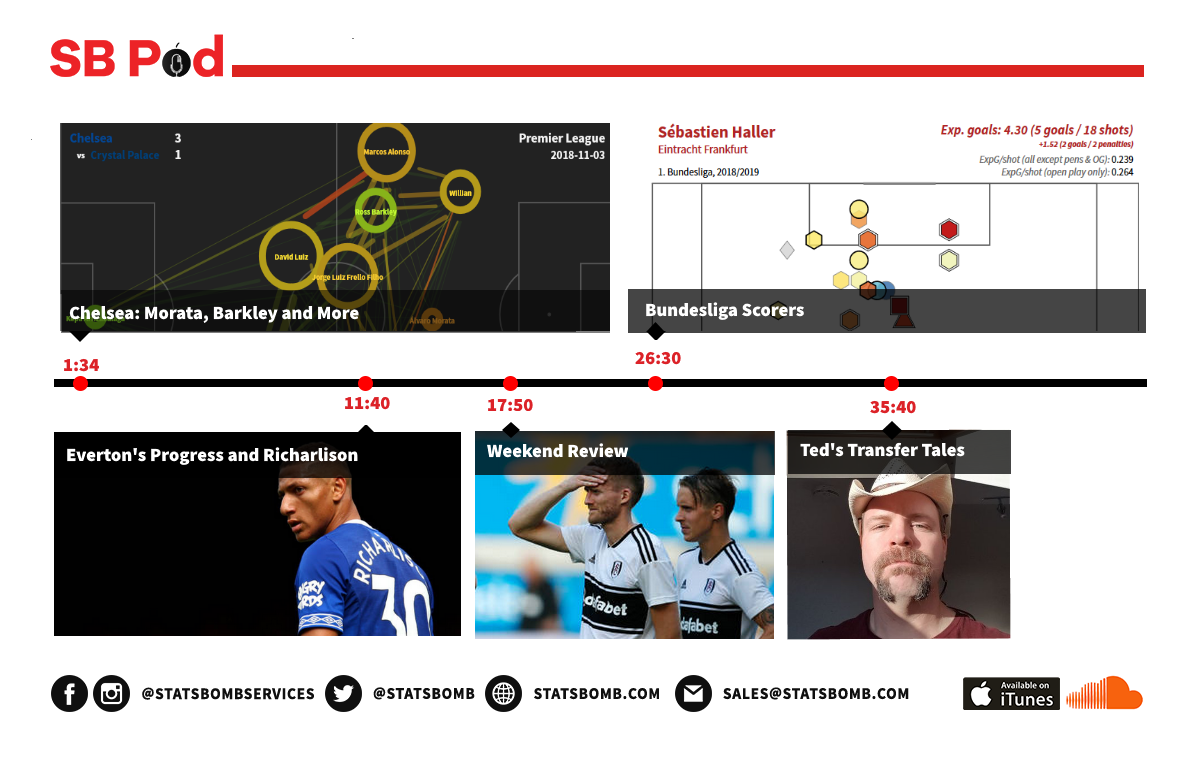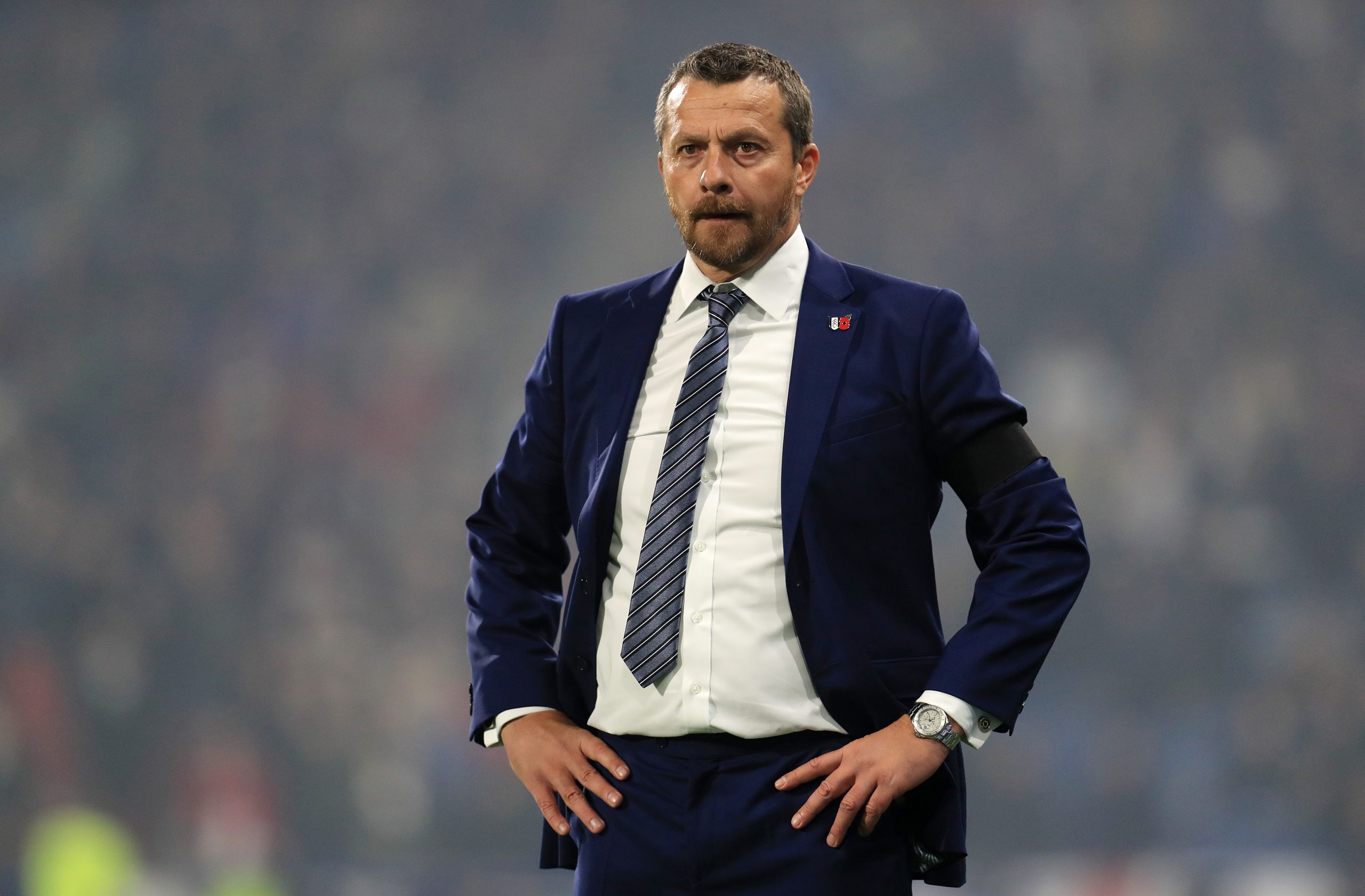Last week I spoke at the FC Barcelona Football Coach Analytics Summit, held at Cuitat Esportiva Joan Gamper, or what is effectively modern La Masia. It’s the complex that houses the training areas for Barcelona’s football teams plus basketball and handball. This is a bit of a report on what I did and learned on my trip.
On a personal level, it’s difficult to convey how special this felt. For a journey that started from absolutely nothing in 2013 to be invited to speak at this kind of event in Barcelona in 2018 is kind of staggering.
StatsBomb. Barcelona.

As if being invited to speak wasn’t enough, the people I spoke alongside are among the best of the best in their fields.
- Sarah Rudd of Arsenal, one of the pioneers in the field of football analytics.
- Dean Oliver, one of the fathers of NBA Analytics.
- Will Spearman, actual fucking particle physicist at CERN, who now solves tracking data problems for Liverpool.
- Ravi Ramineni, also an early pioneer in football analytics who works for Seattle and gets to tell stories about actually having an impact on the pitch.
- Javi Fernandes, who merely taught the world that Messi does amazing things just while standing still.
- And Evil Luke Bornn, whose resume of notable works in the field is taller than the NBA players he teaches now. The less said about this man, the better.
If you could quietly shadow any of these people in their jobs for a day, you’d learn a massive amount technically, statistically, and about the game itself.
Anyway, it was amazing just to be there amongst very humbling company. Below are my notes for the weekend.
For starters, it’s fairly clear at this point that the data revolution in football is ongoing. It’s not just rich teams like Barcelona, Liverpool, and Arsenal that are investing here. And it’s not even all the rich teams, to be honest - there are plenty of teams with money that haven't touched serious data analytics. It’s the SMART teams that are now involved. Early mover advantage is serious. What I know now after working in this field dwarfs what I knew at the start, and even though our early work was pretty good, we're far more capable of contributing useful insight across most of a football club than we were in 2013-14.
What the smart teams know now - with better data access and a lot of money to invest - may even dwarf what we know outside, or at least it probably will soon, largely because they get to incorporate our research alongside their own.
Luke’s Talk - Communicating Ideas Visually
Those of you who saw Luke speak at the OptaPro Forum in February saw a similar talk, which was really good. There were minor adjustments this time around, including a lovely Jose Mourinho quote about people who use stats in football.
The basics are that, despite doing a lot of modelling with a lot of math, Luke’s group at the Sacramento Kings constantly try to find ways to summarise their info visually. This includes plenty of TVs around the practice facility that subtly convey info that helps teach the players about their own games and that of the opponents.
Every shot at the training facility is tracked in their data, and they end up with something like 2.5 million shots a year plonked into their data set. What’s interesting though is that unopposed, the best shooters in their team can make around 90-95% of their shots from three-point range, while it’s closer to 40-45% in games, so basic practice data is not the same as game samples.
Ted(’s) Talk - Game Models and the Full Data Stack
The beauty of not working in a football club is that you have way more freedom in what you get to talk about and how you get to do it. The downside is you don’t get to show cool stuff that has practical, on-field impacts with stories to tell behind it. And you don’t really get to work with tracking data (yet). And you don’t get to have words like “Liverpool” or “Manchester United” next to your name. For like 99% of the audience, Liverpool is just going to be cooler than StatsBomb, and nothing I can do will change that.
One of the requests for my talk from Javi was to discuss how data can help coaches make in-game adjustments. This is complicated, because I don’t work for a club currently and we don’t collect our data live just yet, but as you can see from my talk, I made do.
Sarah Rudd 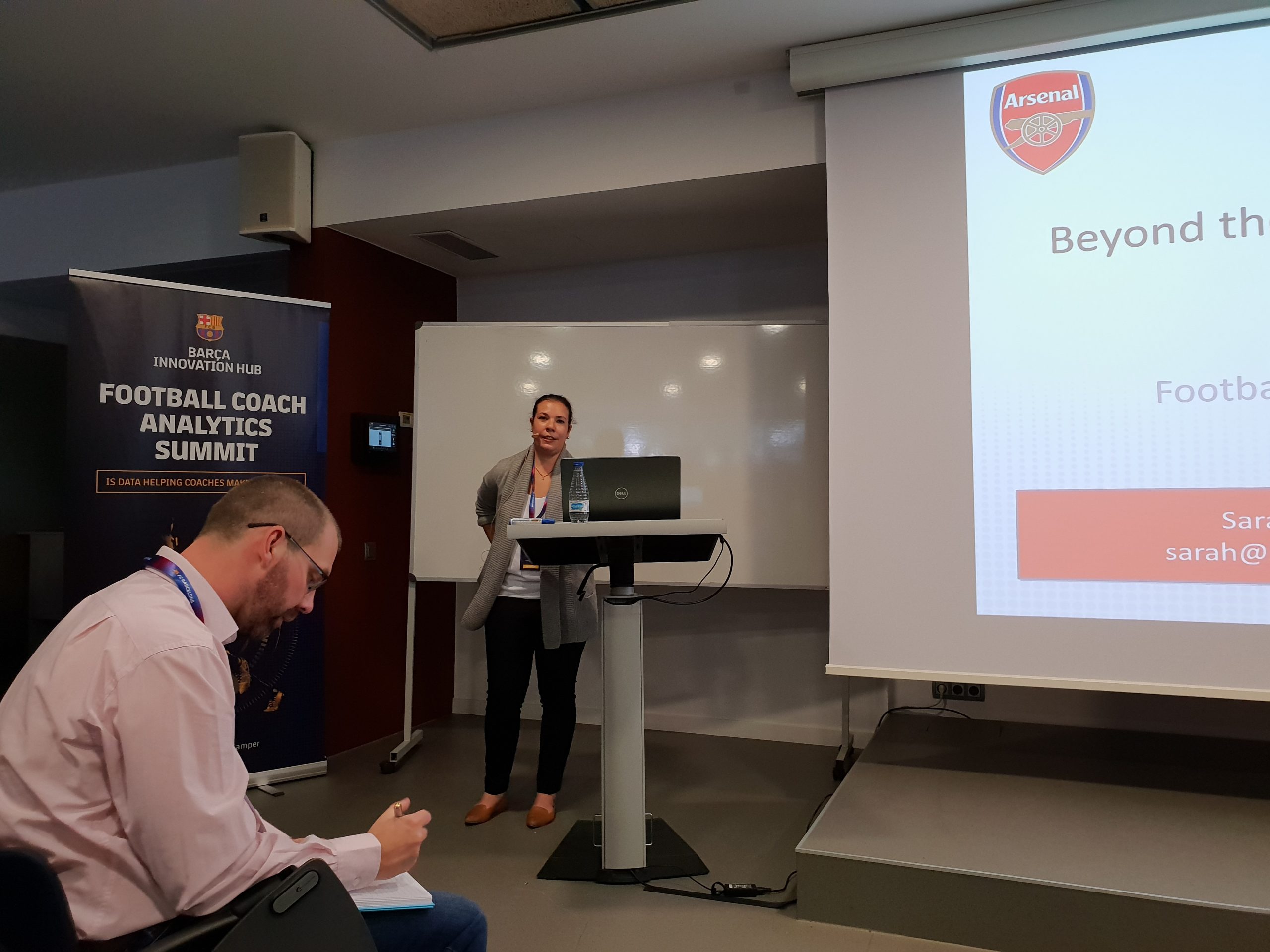
Sarah found the sweet spot for giving insight about work she does inside of Arsenal while also not giving away super sekrit info.
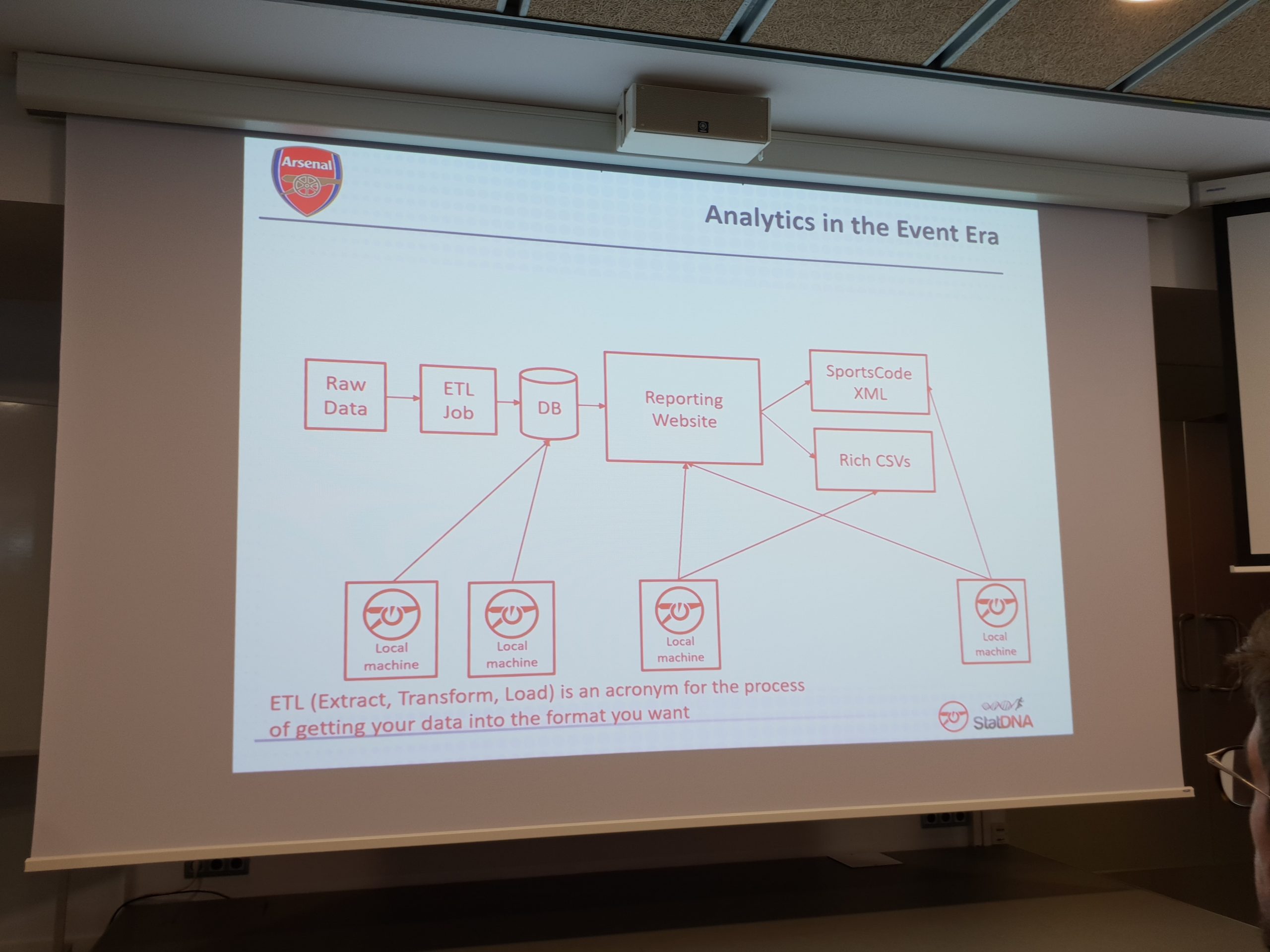
As teams do more with tracking data, the level of technical knowledge you need to be able to work on those parts of the team increases dramatically. StatDNA in particular has gone from being able to work in CSV files to needing an entire real-time SPARK infrastructure that scales as necessary.
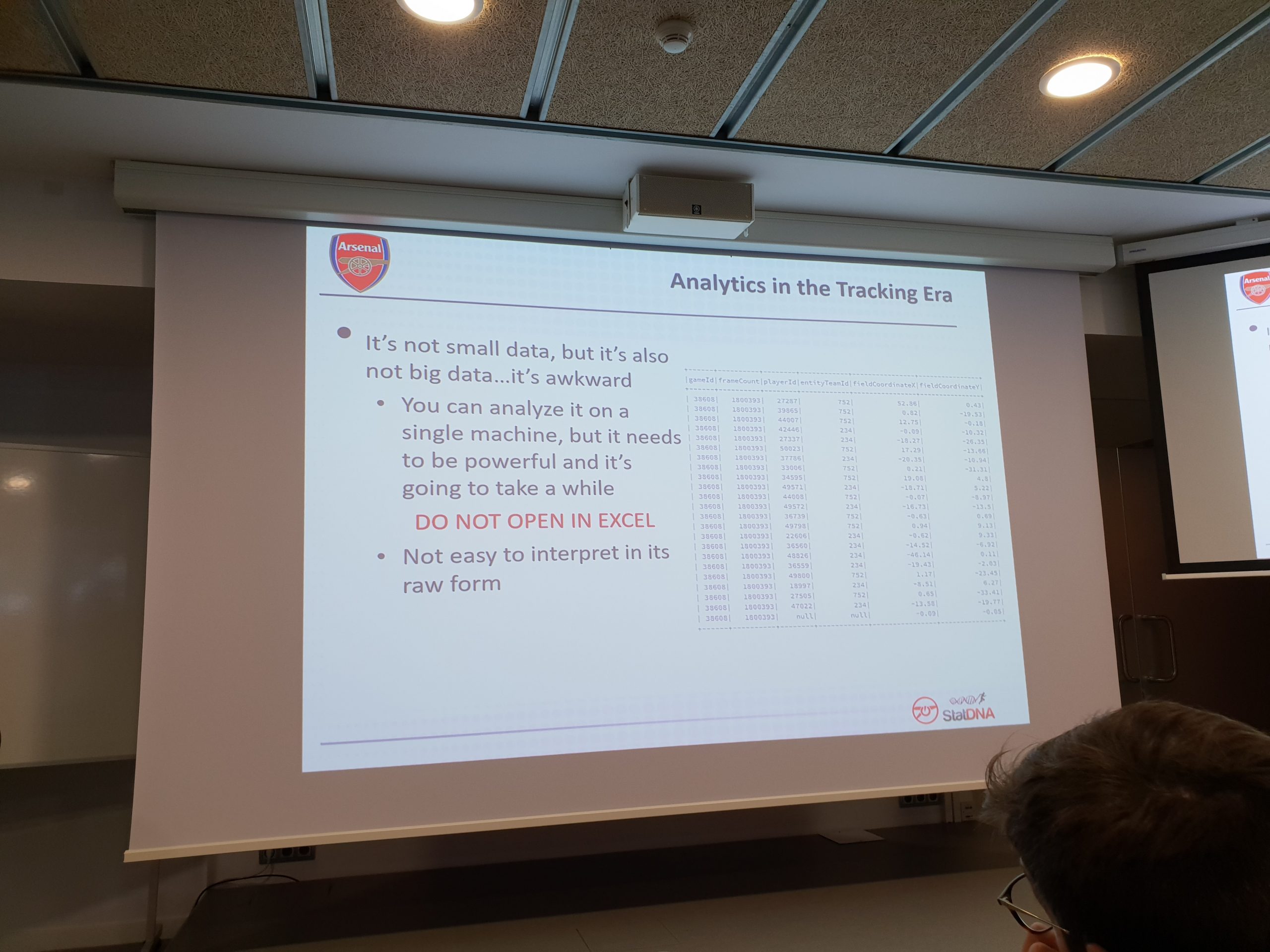
We’ve seen recent discussions about teams being able to use data to communicate with the bench, but I’m not sure the meaningful tech problems, like parsing and digesting the vast amount of info in tracking data in real-time, have actually been solved.
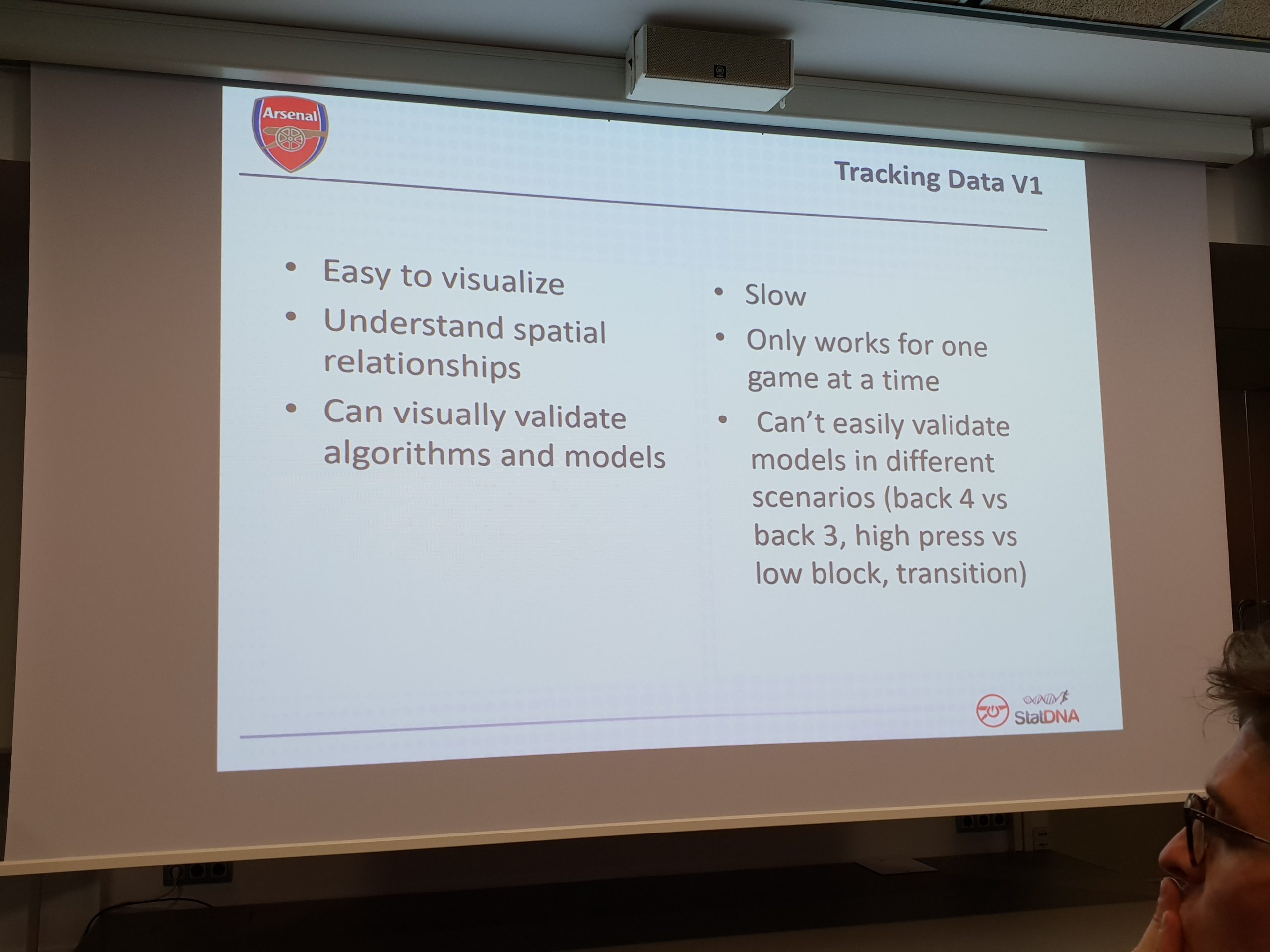
As I noted on Twitter, I really loved Sarah’s slide on “surfaces”, or different analysis frameworks that get repackaged over the top of their tracking info. One of these is spatial control, but the other one is for mapping pressure. We obviously use some form of these ideas at StatsBomb, but I didn't know what to call them. Surfaces feels right.
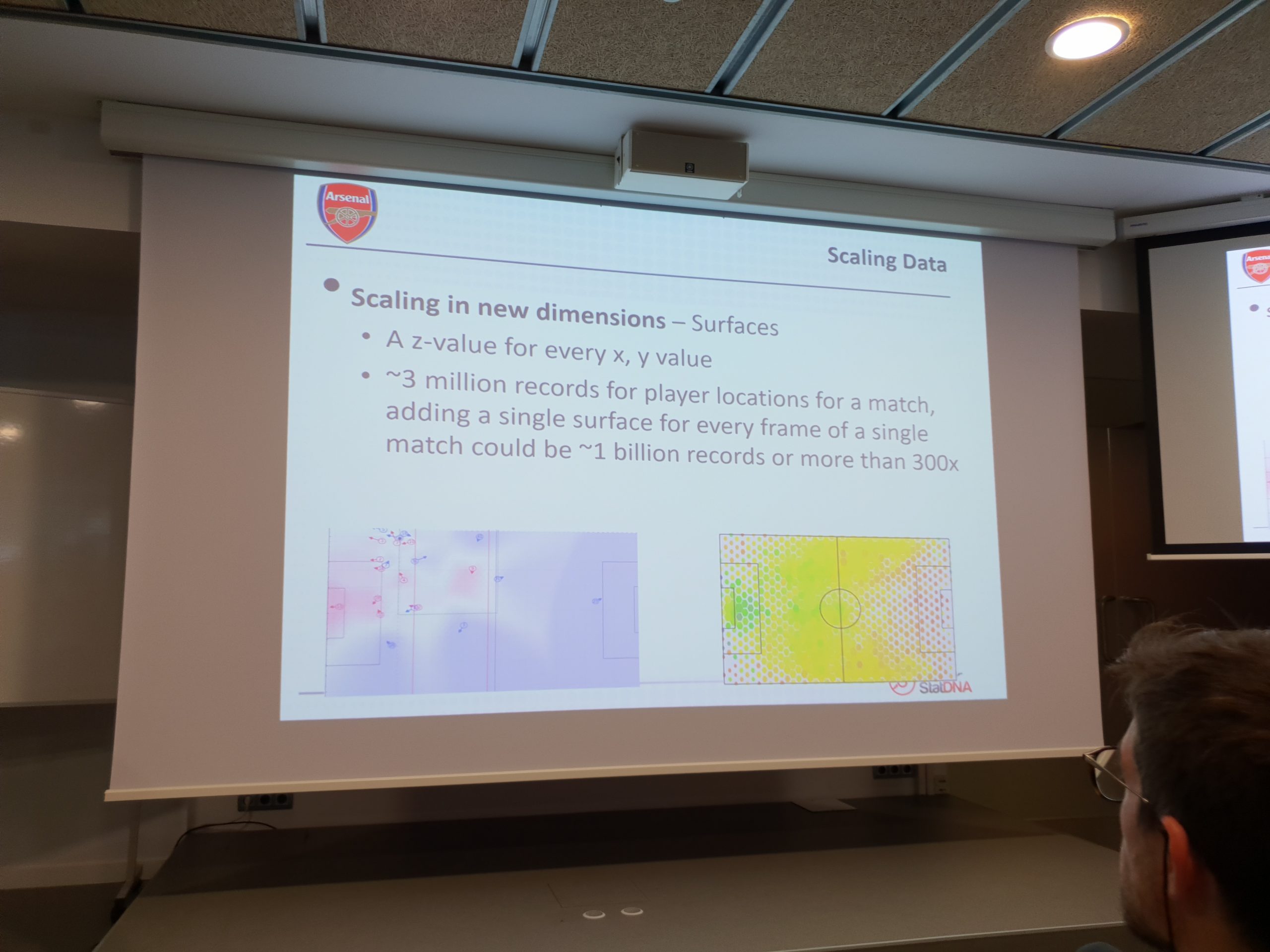
I missed Dean’s talk because of a meeting, and only caught half of Ravi’s due to room change confusion.
Javi’s talk was a small spin on his Sloan work linked here, plus updated practical stuff for how they are starting to approach the use of complex tracking work at FCB. He also discussed the translation of some pretty massive model and data work regarding a question from Valverde on whether the team was transitioning too quickly and needing to pause to let the opposition retreat and create space.
All of this model work was distilled across multiple visualisations and was eventually communicated by back to the team by the coach, on a tactics board, with two horizontal lines.
Months worth of work, and the coach just drew two lines…
On the other hand, it’s a hell of a lesson in information compression and delivery.
The Spearman
Will’s stuff has really progressed since he was wowing people at Forums with his early work on vectorization of passing models and space control. This talk provided insight as to how he thinks data helps them right now (to remove bias, to act as a force multiplier), plus some cool, relatively basic application info.
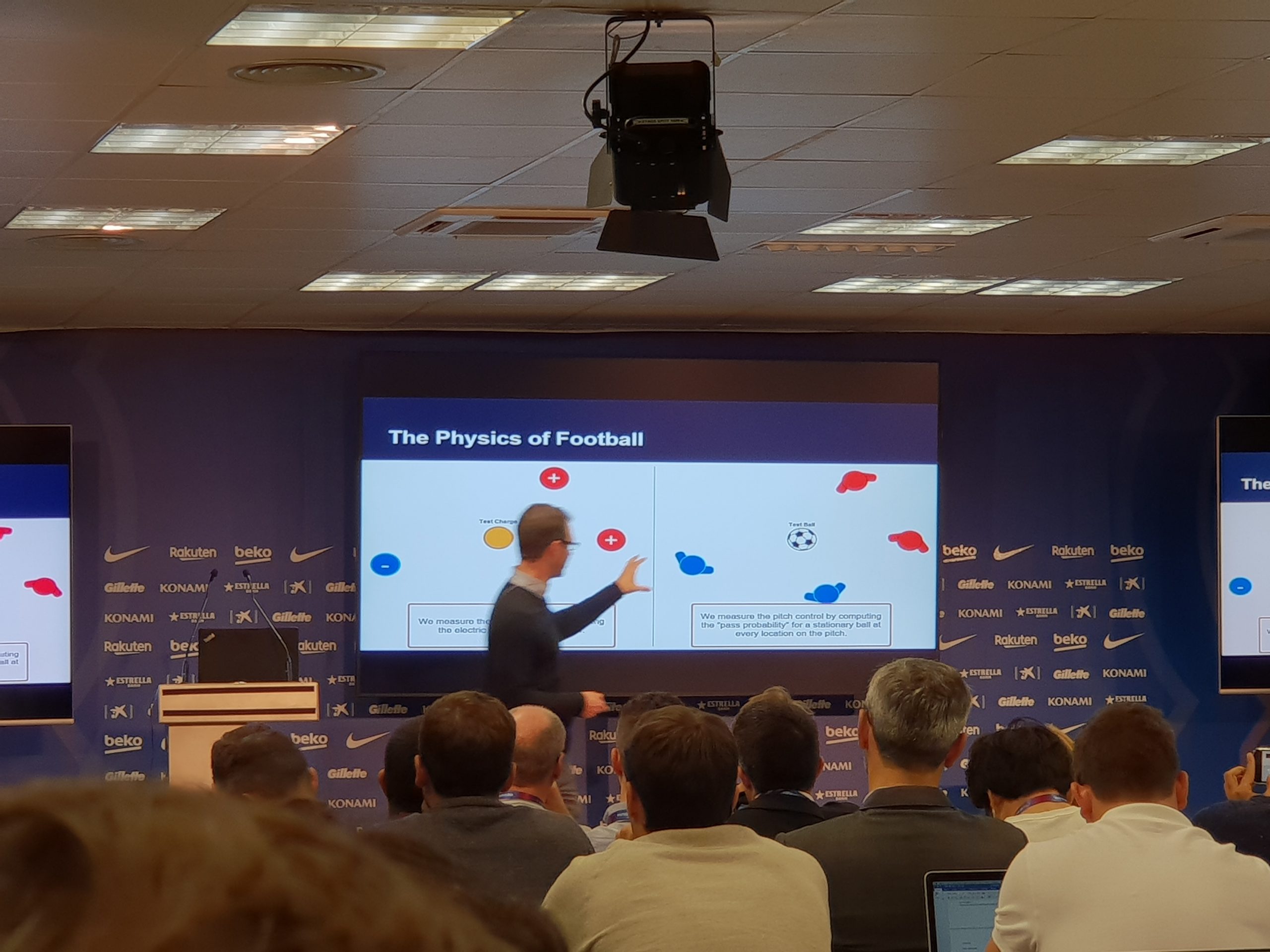
His background probably makes him the nerdiest of the professional football analytics practitioners, but Will's so smart and good at communicating that he's able to compress these incredibly complex ideas into understandable bites.
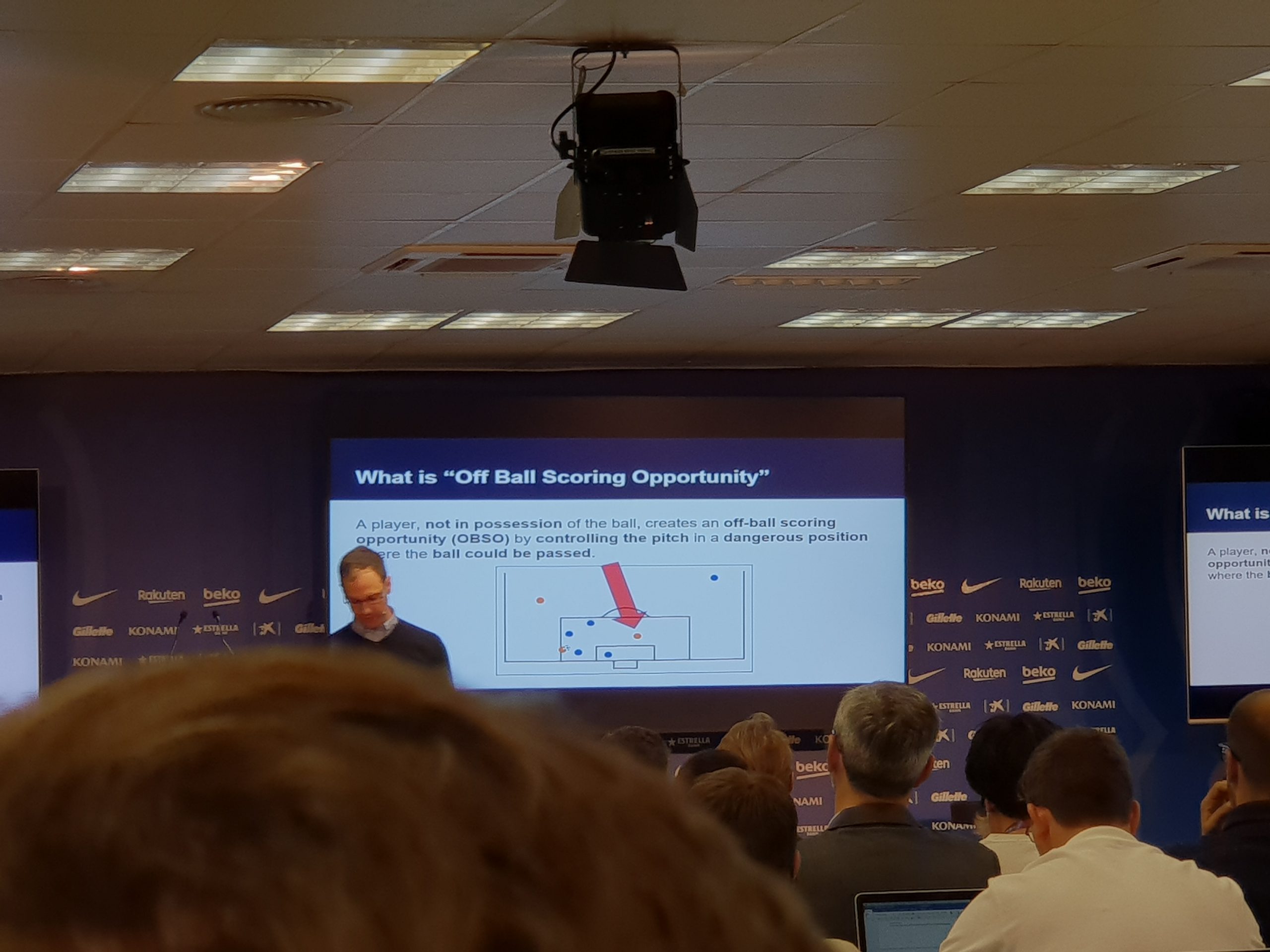
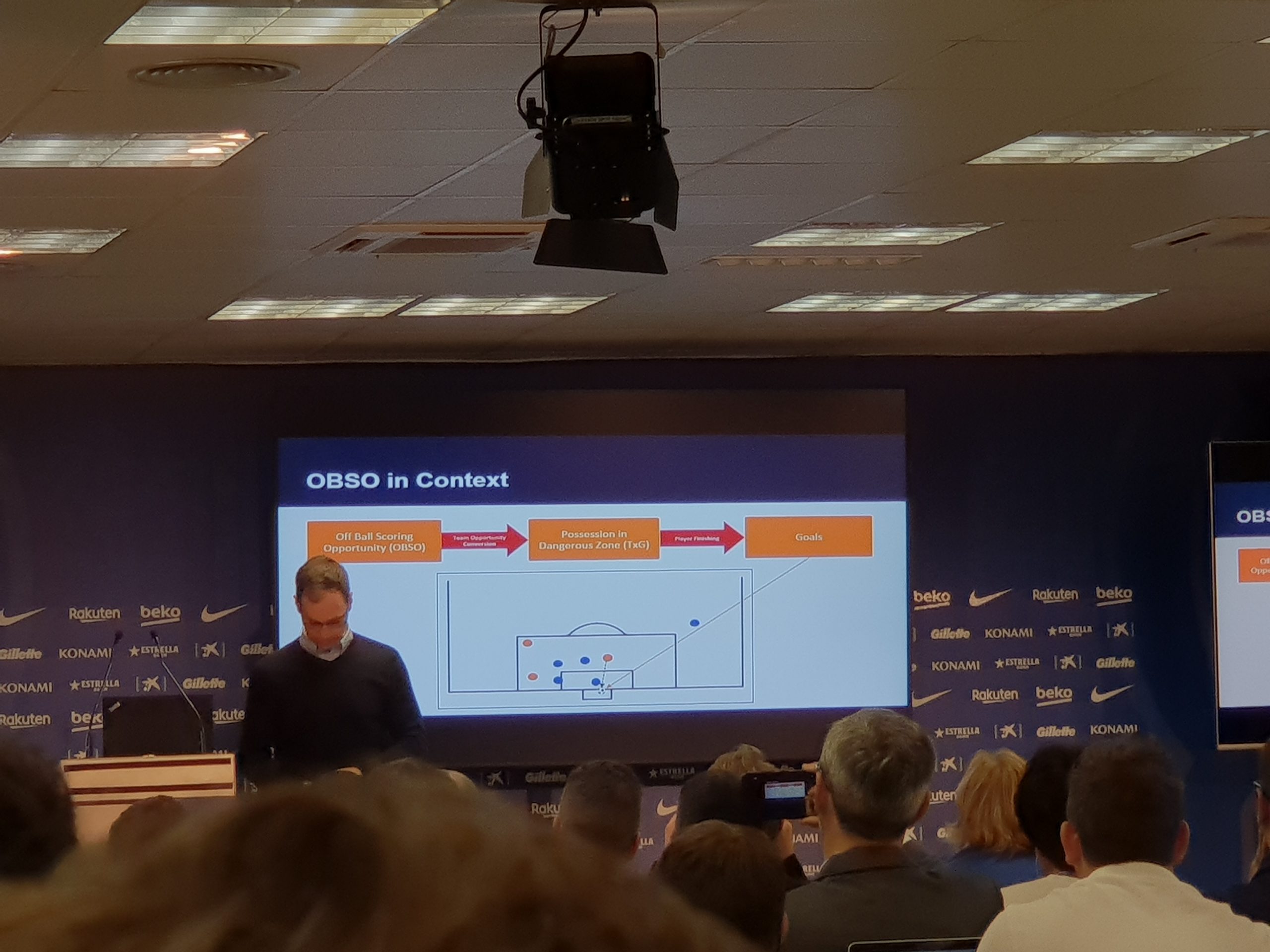
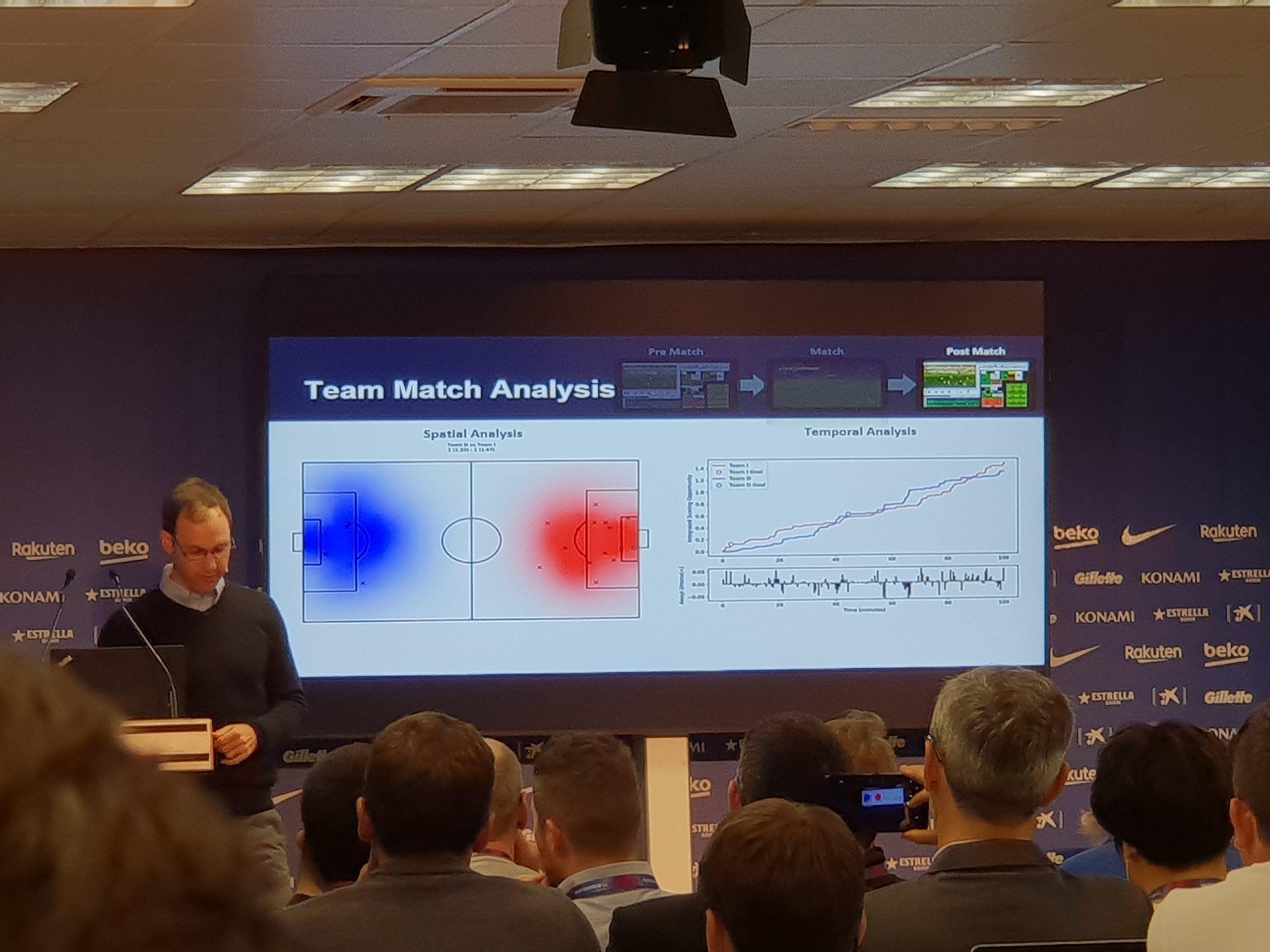
OBSO does an awful lot to help smooth the progression of scoring expectation in a football match to something closer to what we generally see on the pitch. After the event finished, we were taken on the team bus to Camp Nou, where the gala to kick off the Sports Tech Symposium was held and I got this photo.
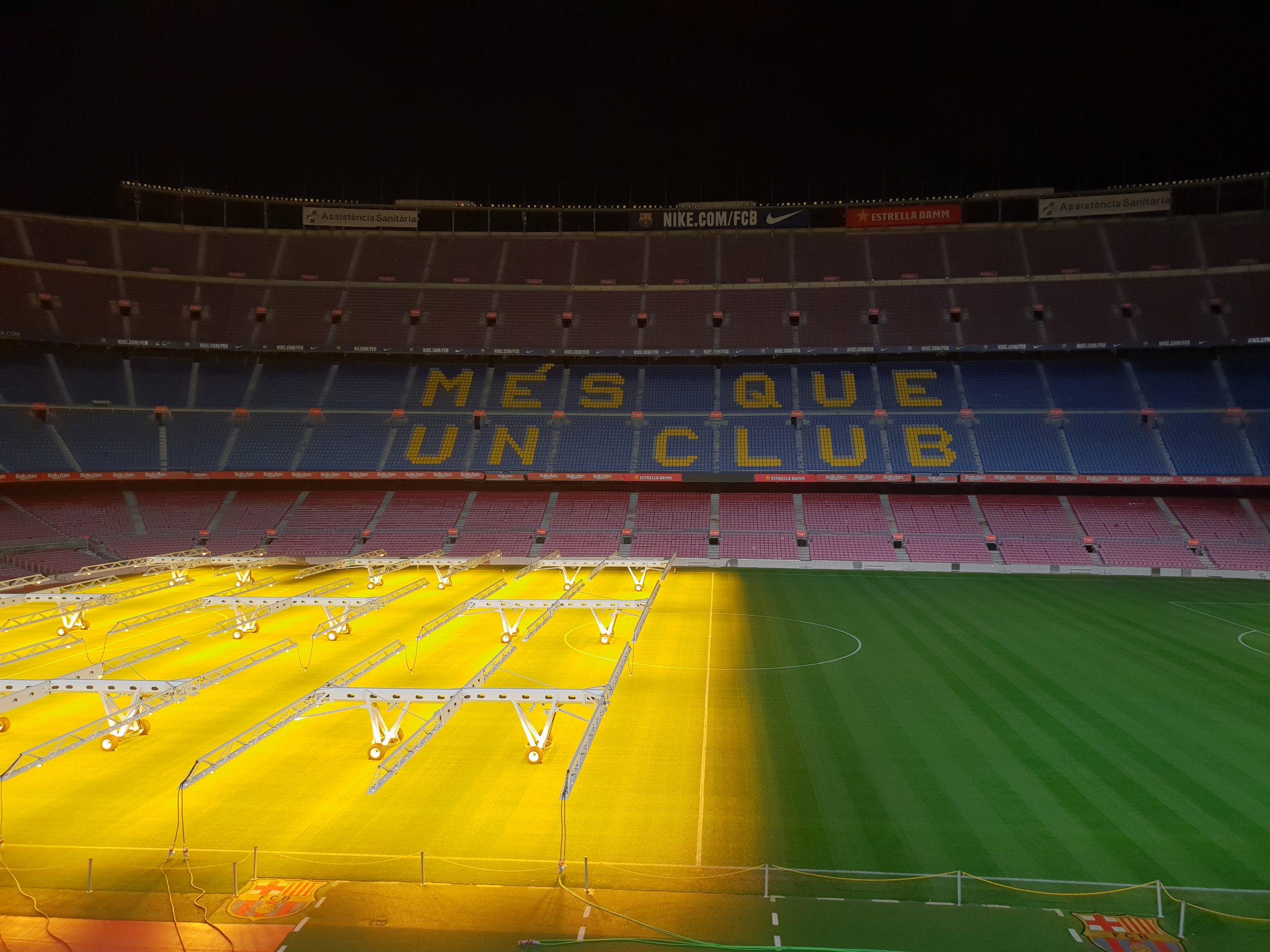
And the next day there was a morning discussion panel on Analytics for the more general Sports Tech audience. Panels with people who actually work for teams are often boring because they have to be guarded about their insights, but I thought Luke did a great job moderating this panel, and extracting interesting perspectives from the panelists. I recorded some of the highlights in a tweet thread.
The afternoon of this event coincided with a monstrous thunderstorm that went on for hours. I think I’ve been in Barcelona about 20 days in my life and this was the first one I can remember rain. Obviously I failed to bring a coat and ended up drenched while waiting for my cab back to the hotel.
Dinner that night was a jaunt to Enoteca Paco Perez, which was good but not amazing and certainly not value for money. This is basically the opposite of how I feel about the rest of the cuisine in the city, and pretty much Spain in general. I don't know if it's my favourite country in Europe, but it's way way up there.
One thing that was amazing were the brew pubs in central Barcelona. Friends thought I was in Copenhagen when I posted this photo, but no, there is a fantastic Mikkeller pub smack in the middle of Barcelona. Mmm, beer.
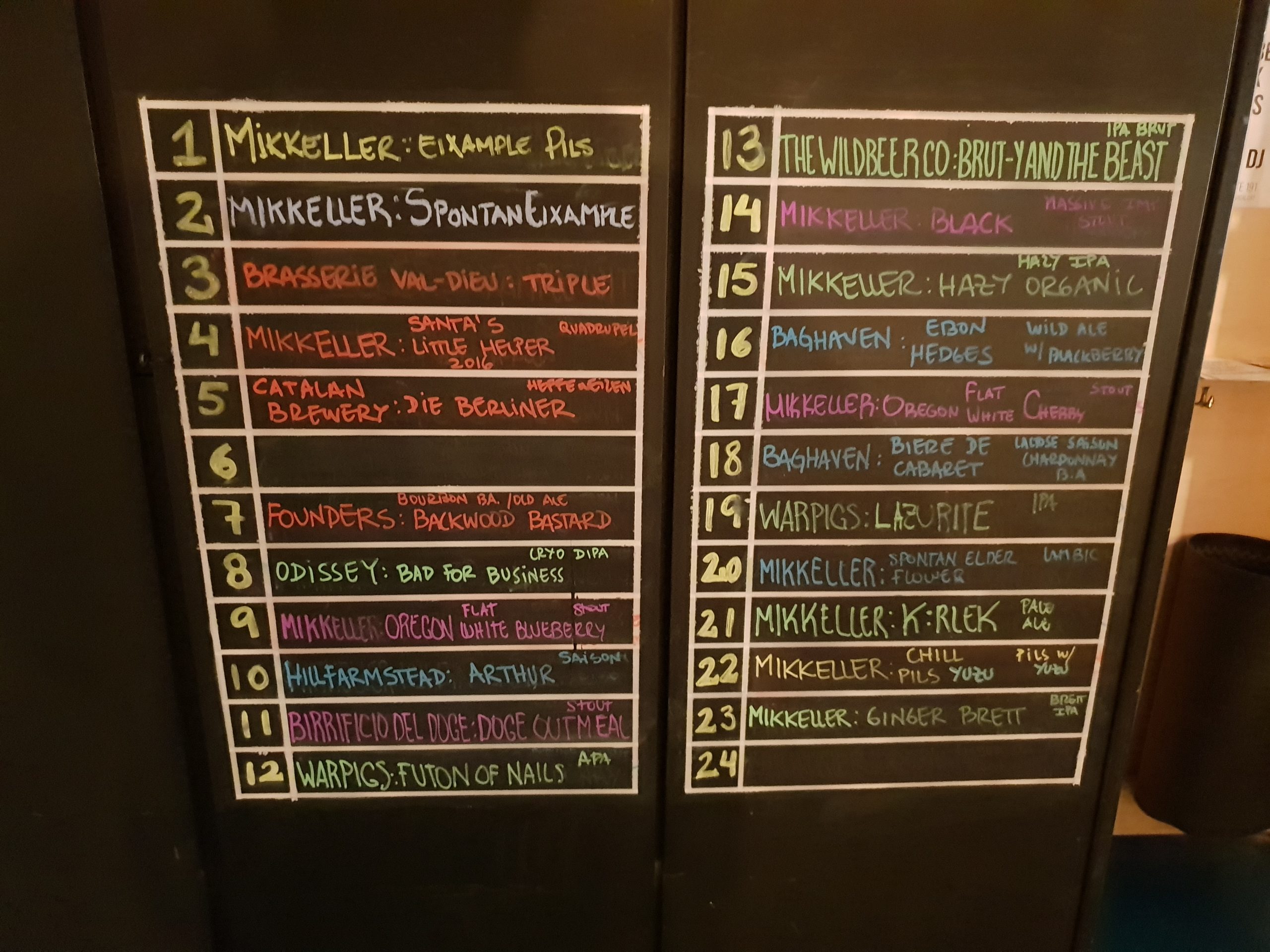
And Garage Beer Co was pretty great as well.

After dinner on Thursday, I ended up at the hotel bar with people from Liverpool, Ajax, Huddersfield, and MIT and drank waaaaaaaaay too many old fashioneds, and forgot to set an alarm before passing out into bed. Luckily my internal body clock woke me just in time to catch a cab to the airport for my flight home. Sometimes you run hot, though the hangover from Thursday took forever to shake off, so maybe the karmic scale zeroed out on that one.
Anyway, StatsBomb. Barcelona.
Really smart people giving lots of football insight. Very lucky.
Maybe we can do it again next year? Peace.
--Ted ted@statsbomb.com
@mixedknuts

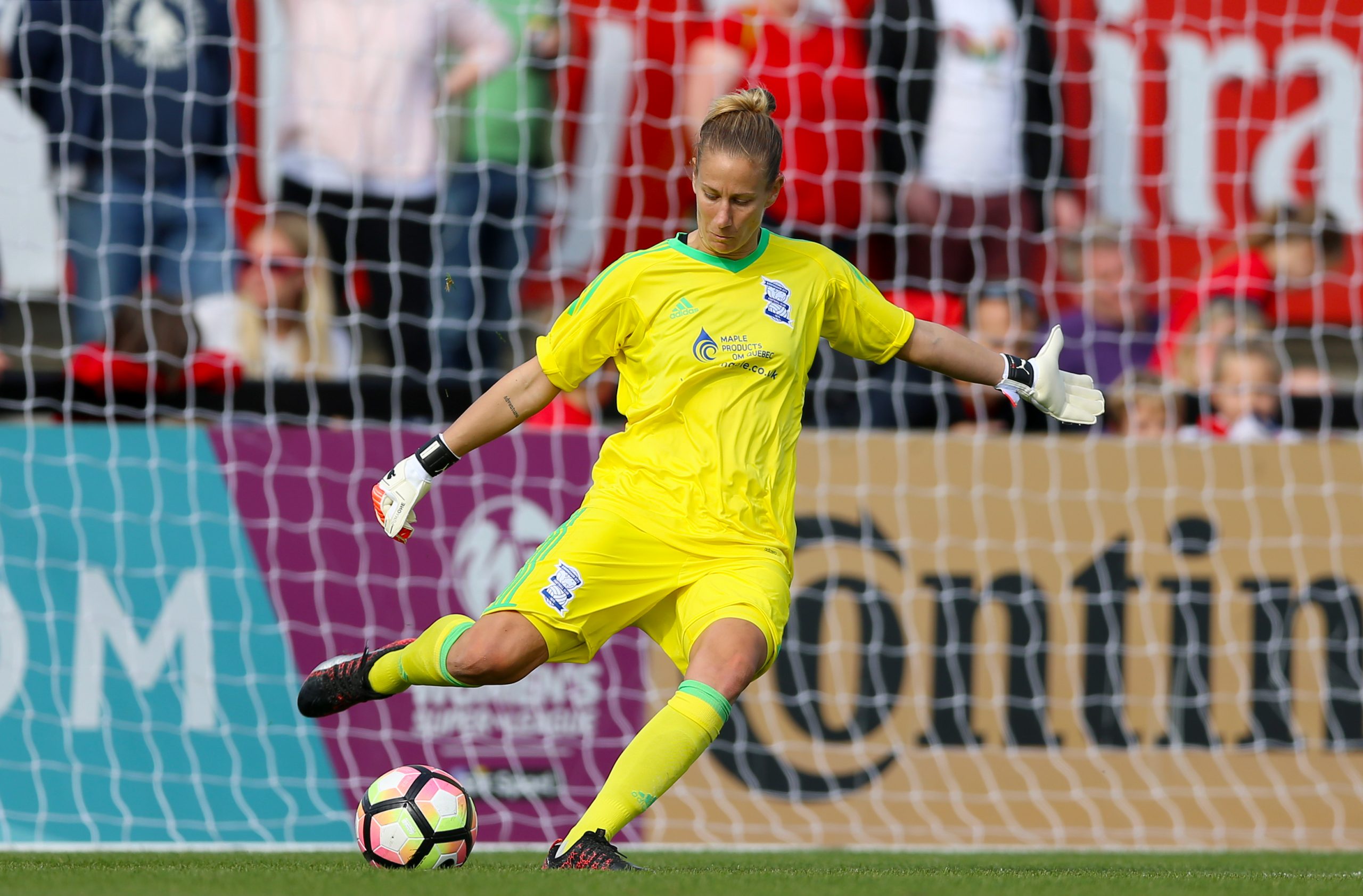



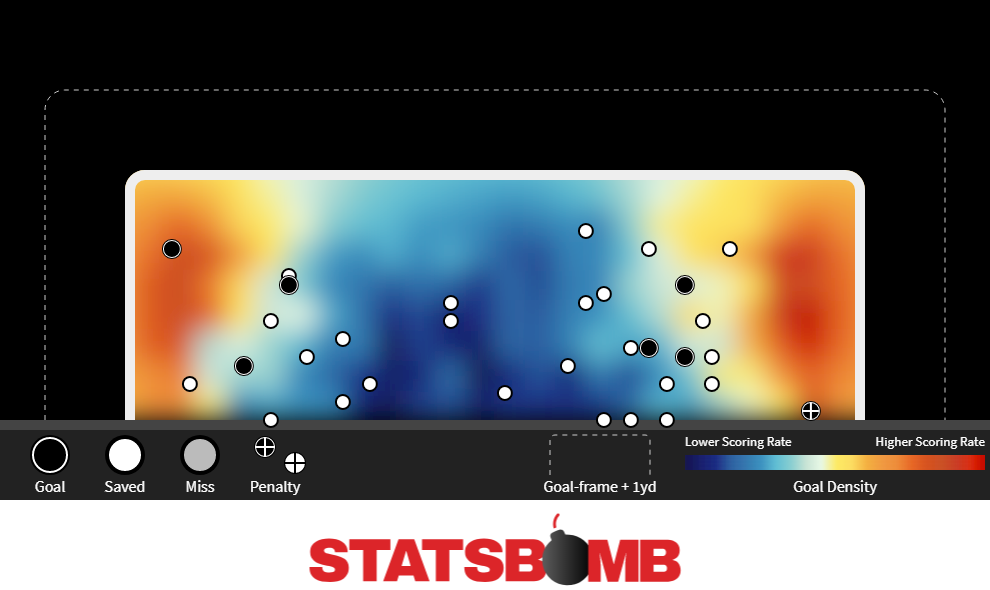
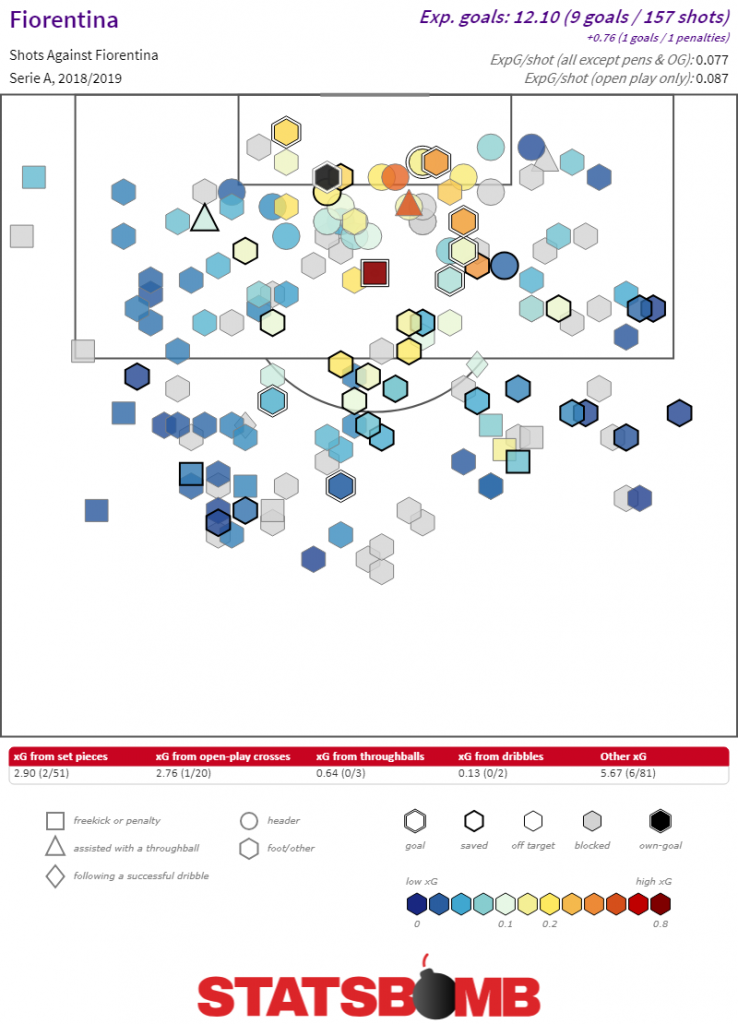
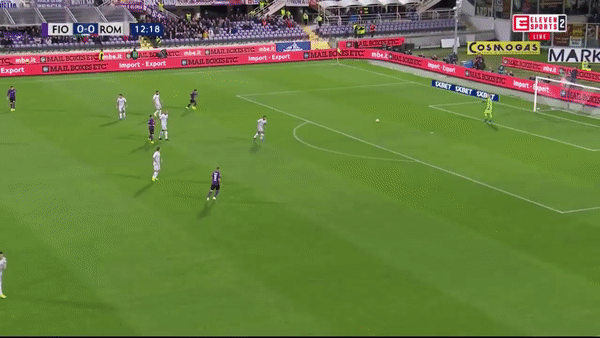 Fiorentina's man-marking hasn't been quite airtight. There'll be instances when Fiorentina players are trying to switch man-marking duties, particularly if the opposing goalkeeper rolls the ball out quickly, and there's a bit of a delay as everyone's trying to figure out who's supposed to mark which player from the opposition. That can lead to opposing players being free in the middle and having enough airspace to receive a pass and dribble forward. The good news is that Fiorentina have recovered well in these instances and turned potentially dangerous situations into low efficiency shots, which is a win for the defense all things being equal.
Fiorentina's man-marking hasn't been quite airtight. There'll be instances when Fiorentina players are trying to switch man-marking duties, particularly if the opposing goalkeeper rolls the ball out quickly, and there's a bit of a delay as everyone's trying to figure out who's supposed to mark which player from the opposition. That can lead to opposing players being free in the middle and having enough airspace to receive a pass and dribble forward. The good news is that Fiorentina have recovered well in these instances and turned potentially dangerous situations into low efficiency shots, which is a win for the defense all things being equal. 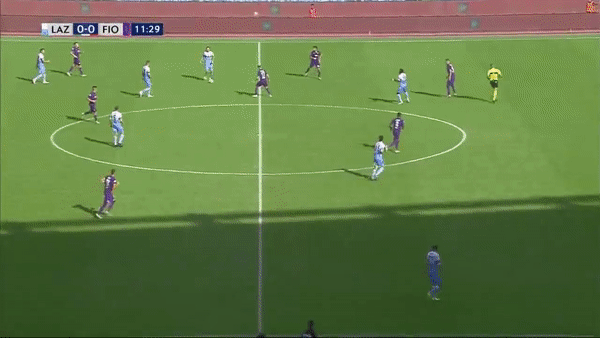
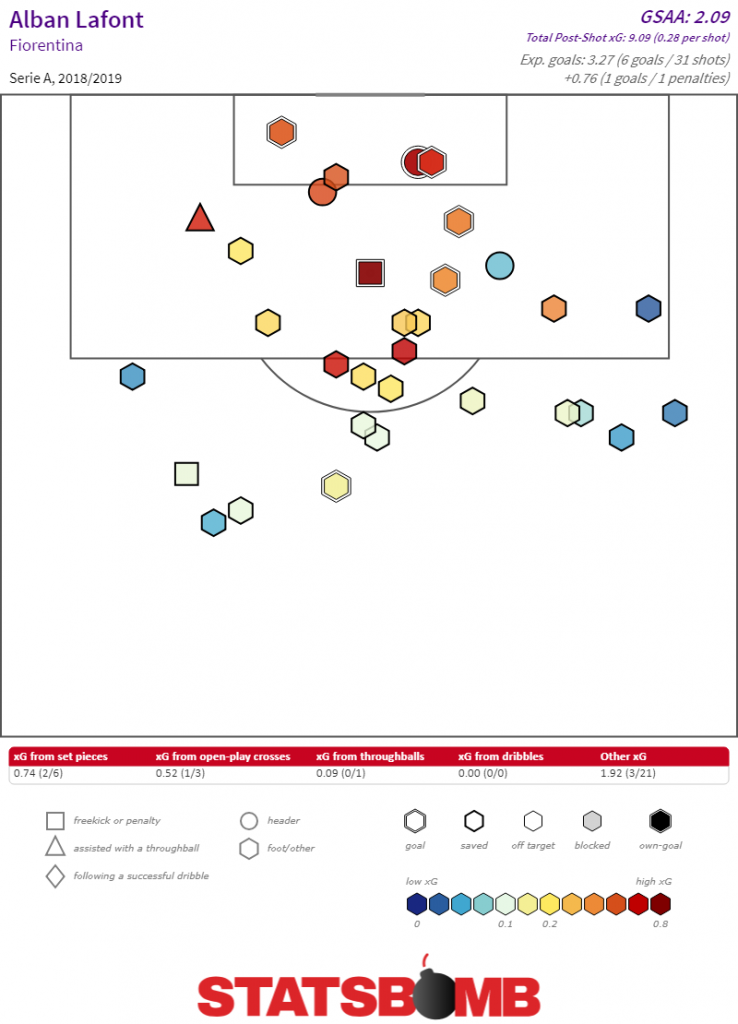
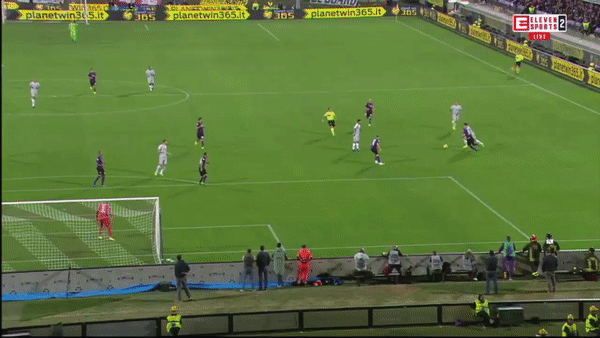 Lafont's distribution has not been quite as sparkling as his shot stopping, but it's still been pretty good, especially given his reputation coming out of France as a sweeper keeper who is a capable distributor. His pass% of 67% is nothing remarkable but what's notable is that his pressured pass% of 78% is joint top with Luigi Sepe. Given that Lafont has only been pressured on 5.8% of his passes, which is the 5th least mark in Serie A, it could just be that his passing under pressure drops off just a tiny bit if teams start to hurry him a bit more as the season progresses.
Lafont's distribution has not been quite as sparkling as his shot stopping, but it's still been pretty good, especially given his reputation coming out of France as a sweeper keeper who is a capable distributor. His pass% of 67% is nothing remarkable but what's notable is that his pressured pass% of 78% is joint top with Luigi Sepe. Given that Lafont has only been pressured on 5.8% of his passes, which is the 5th least mark in Serie A, it could just be that his passing under pressure drops off just a tiny bit if teams start to hurry him a bit more as the season progresses. 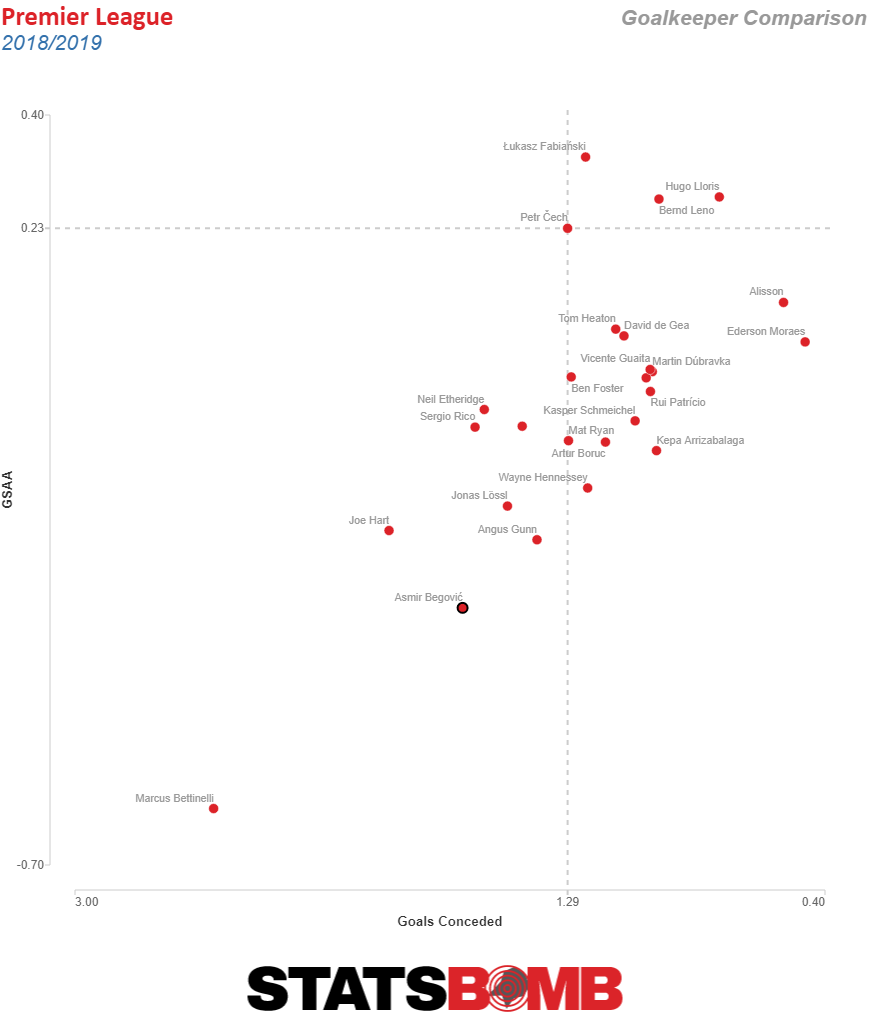 Alban Lafont's first season in Italy has gone about as well as one could hope for when Fiorentina spent €7m over the summer for his services. Playing on a good defensive side to begin with, his shot stopping has made them even more formidable. His distributions has shown promise, and there's even been instances where Lafont has made aggressive plays as a sweeper keeper to bail out his backline. It's fair to expect a little bit of regression with his shot stopping and ability to pass under pressure, but it's clear that Lafont has given a very good account of himself in his debut season in Serie A.
Alban Lafont's first season in Italy has gone about as well as one could hope for when Fiorentina spent €7m over the summer for his services. Playing on a good defensive side to begin with, his shot stopping has made them even more formidable. His distributions has shown promise, and there's even been instances where Lafont has made aggressive plays as a sweeper keeper to bail out his backline. It's fair to expect a little bit of regression with his shot stopping and ability to pass under pressure, but it's clear that Lafont has given a very good account of himself in his debut season in Serie A.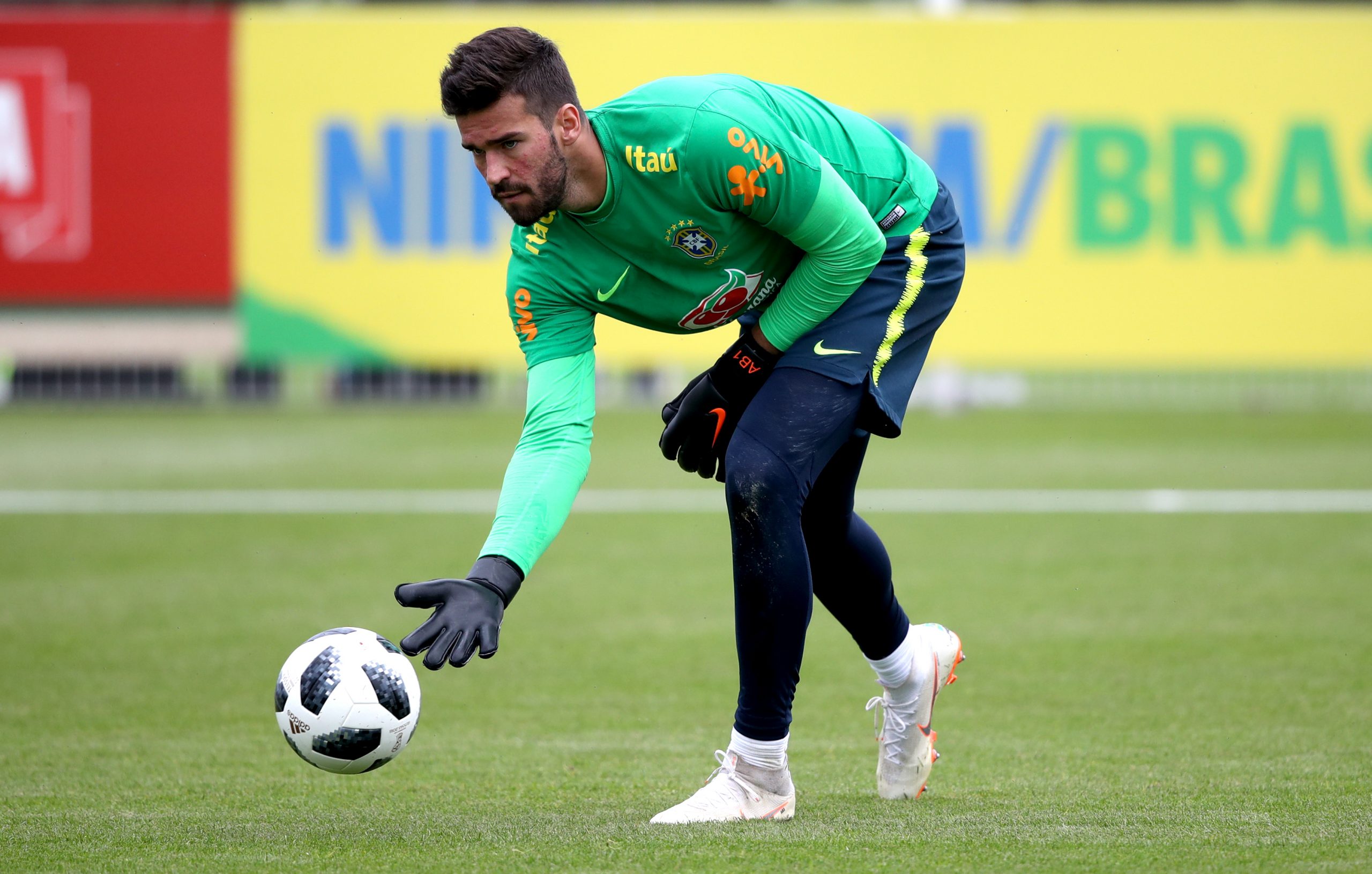
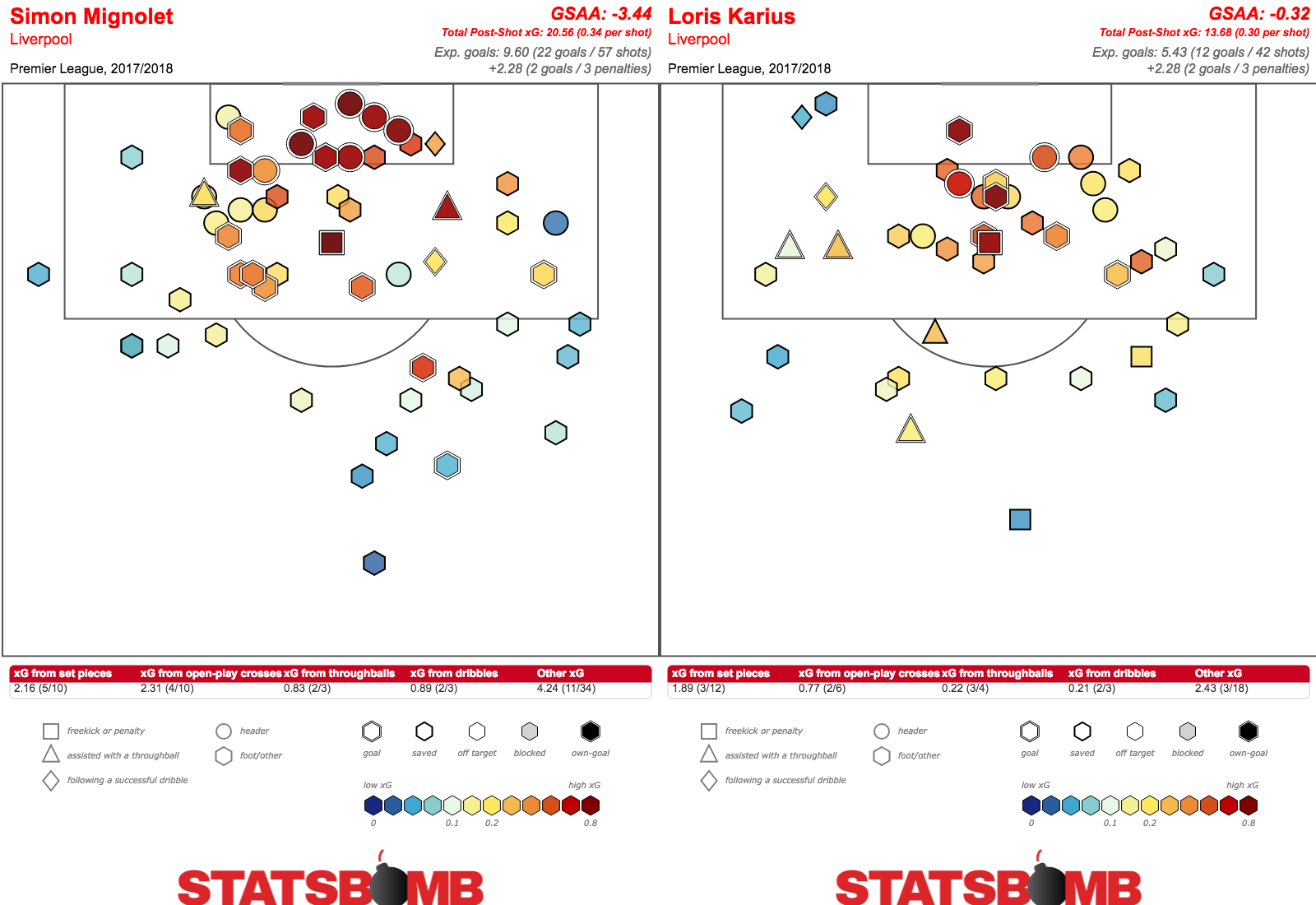

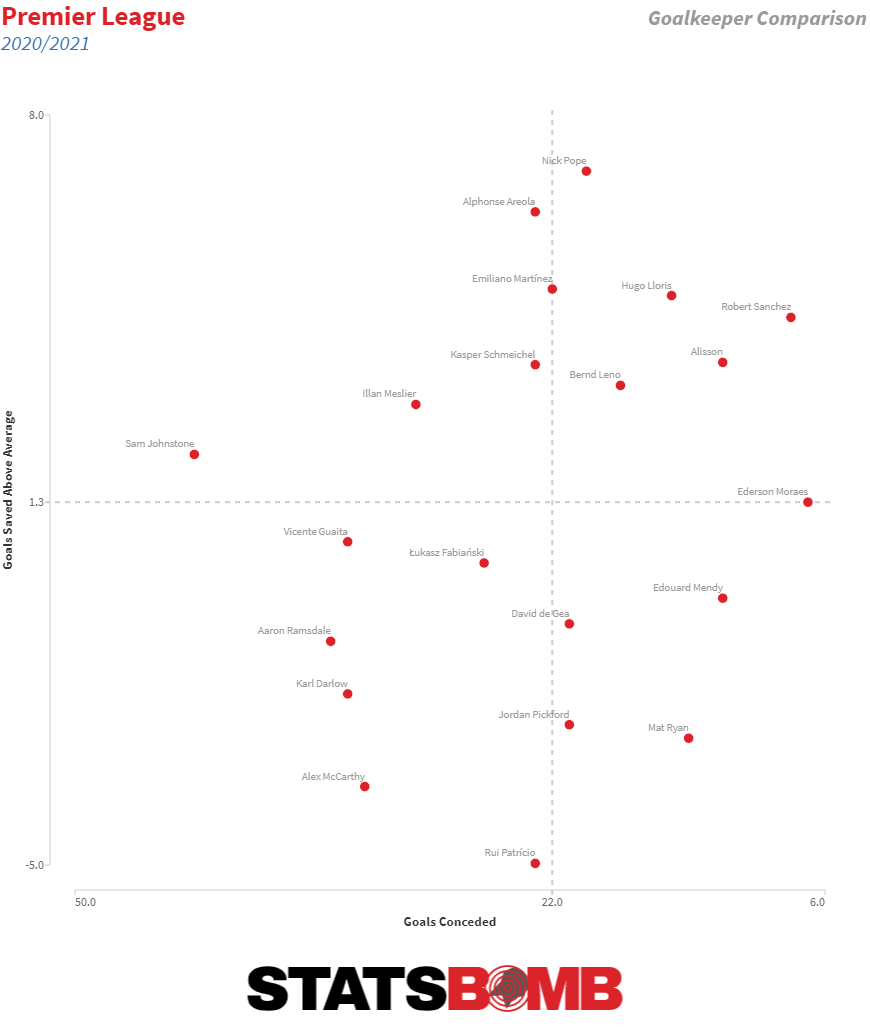
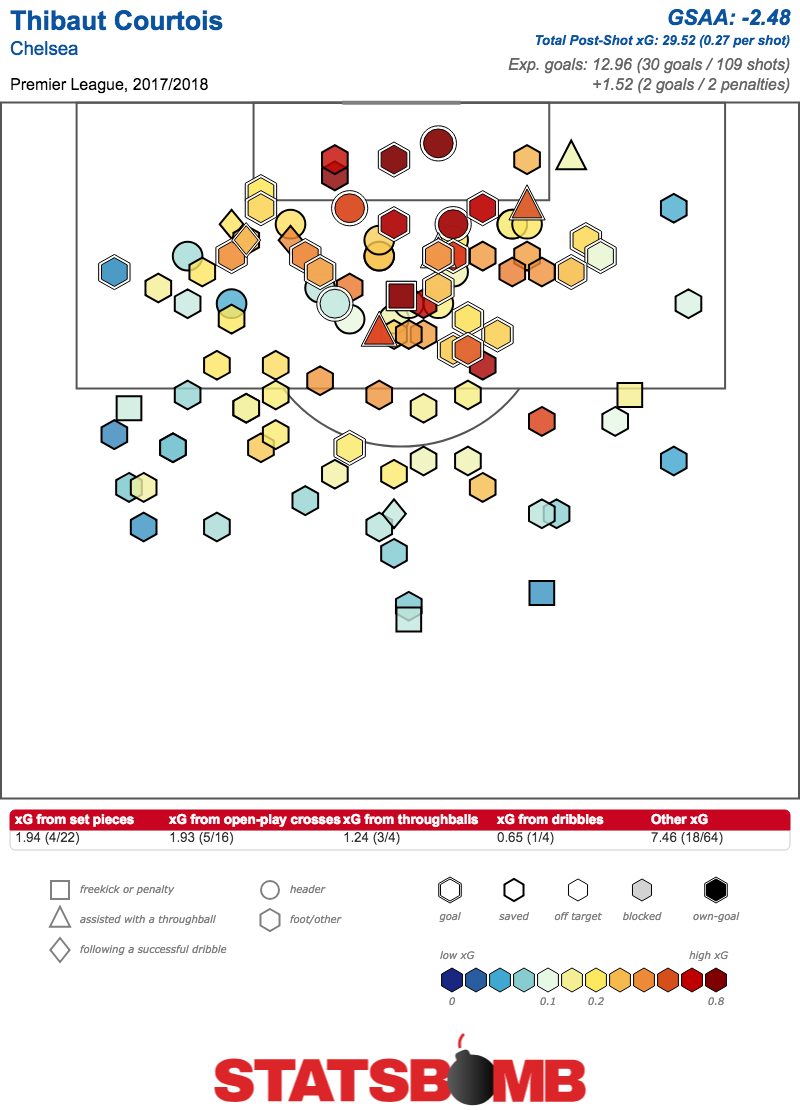



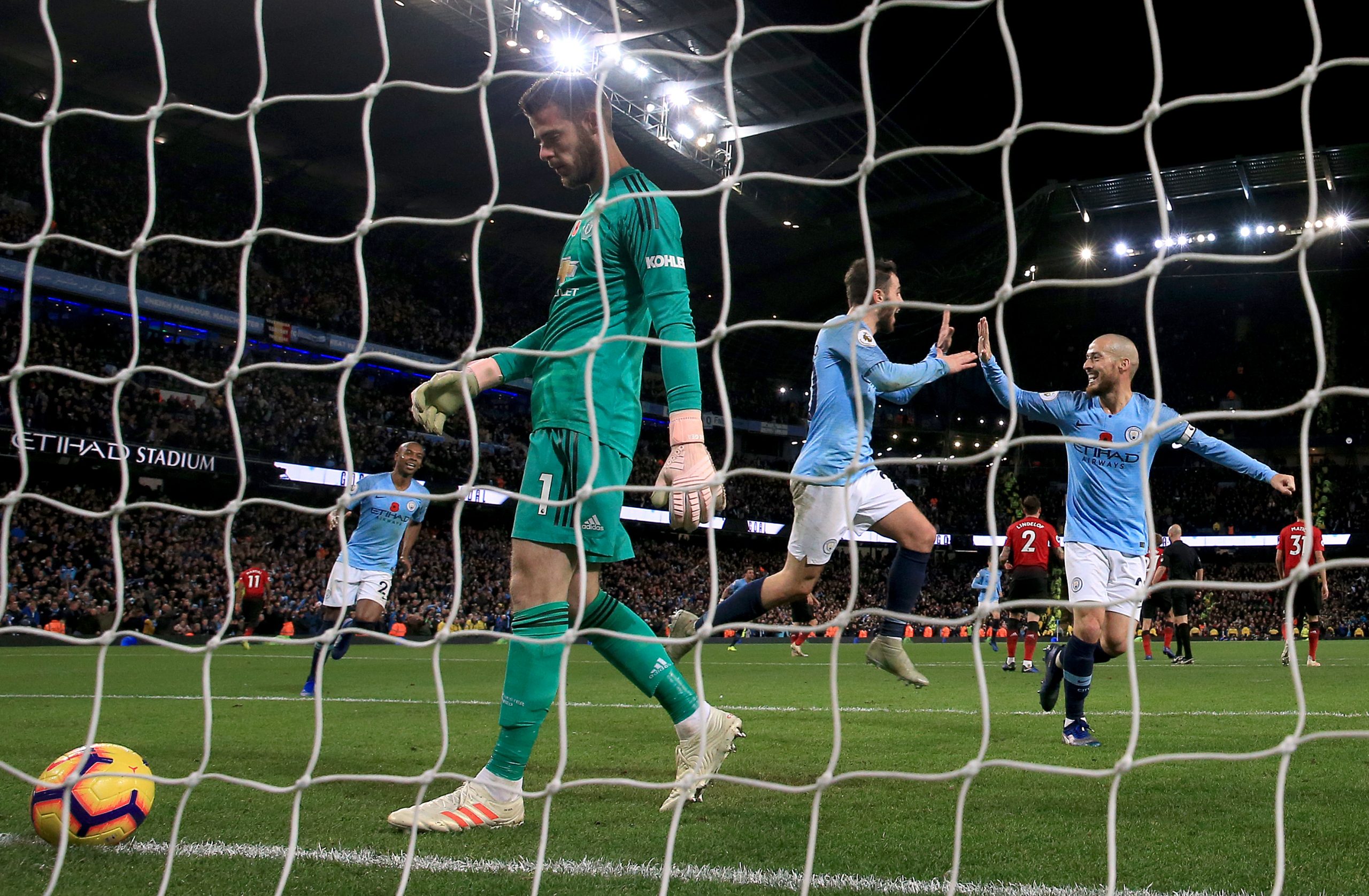
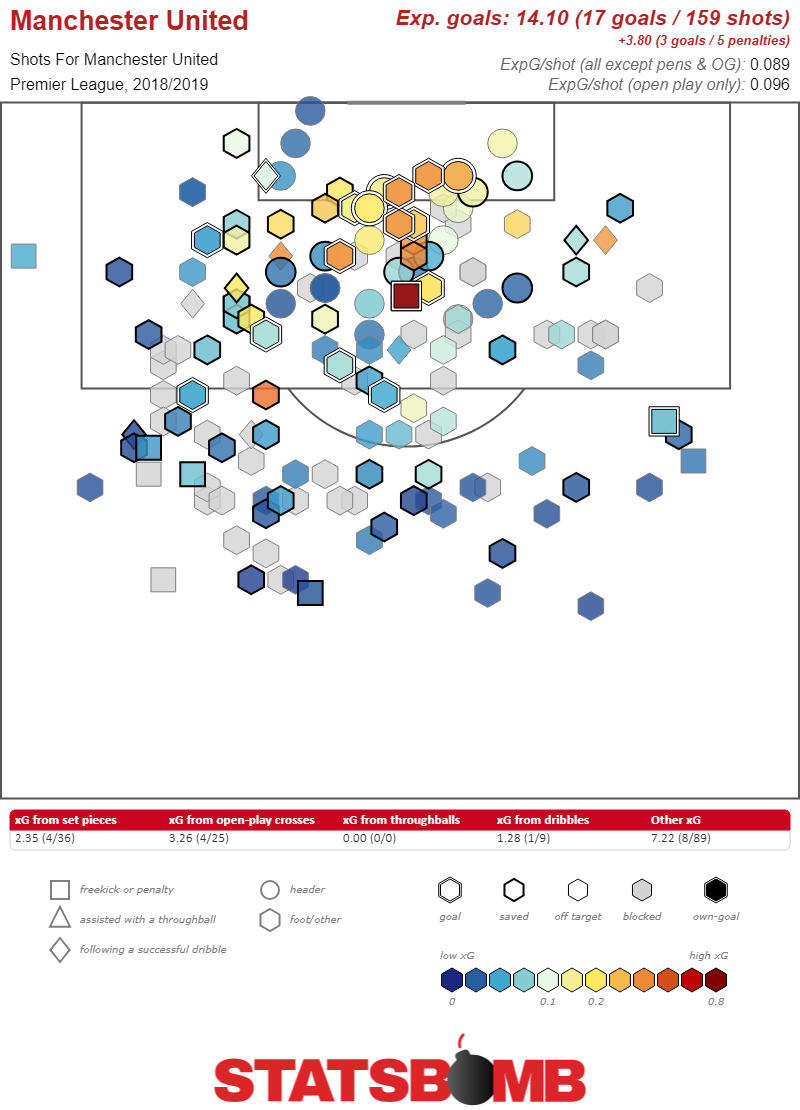
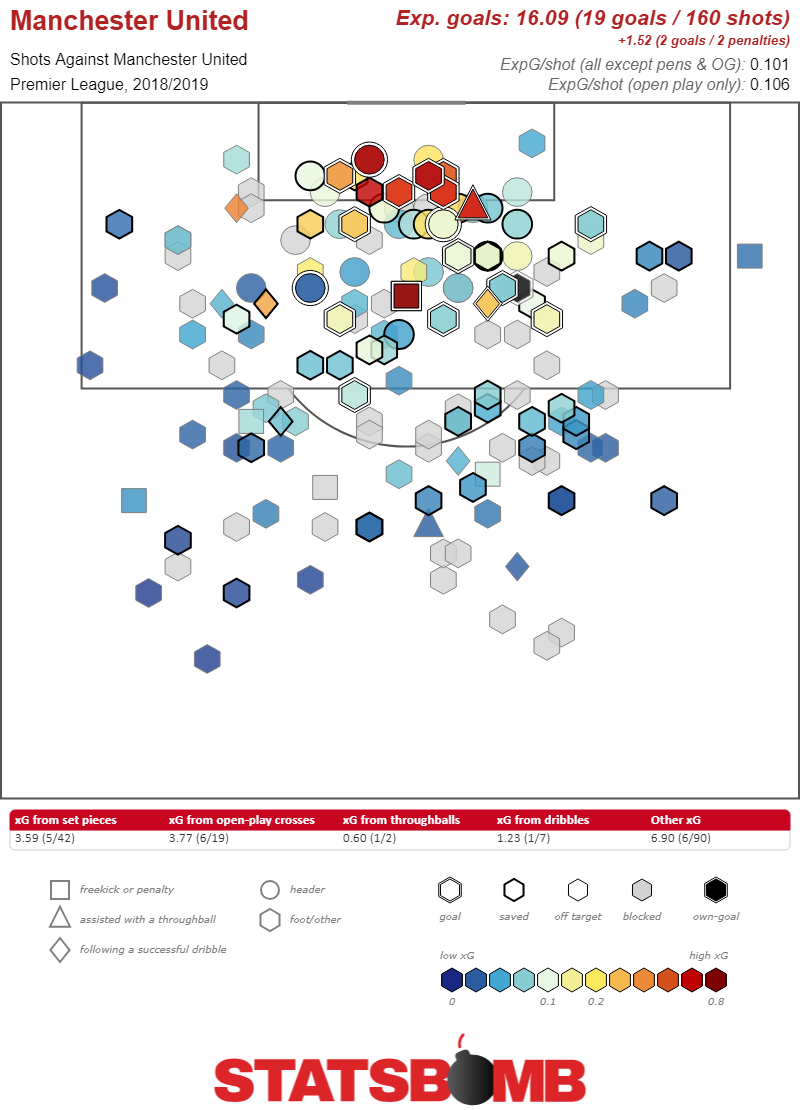
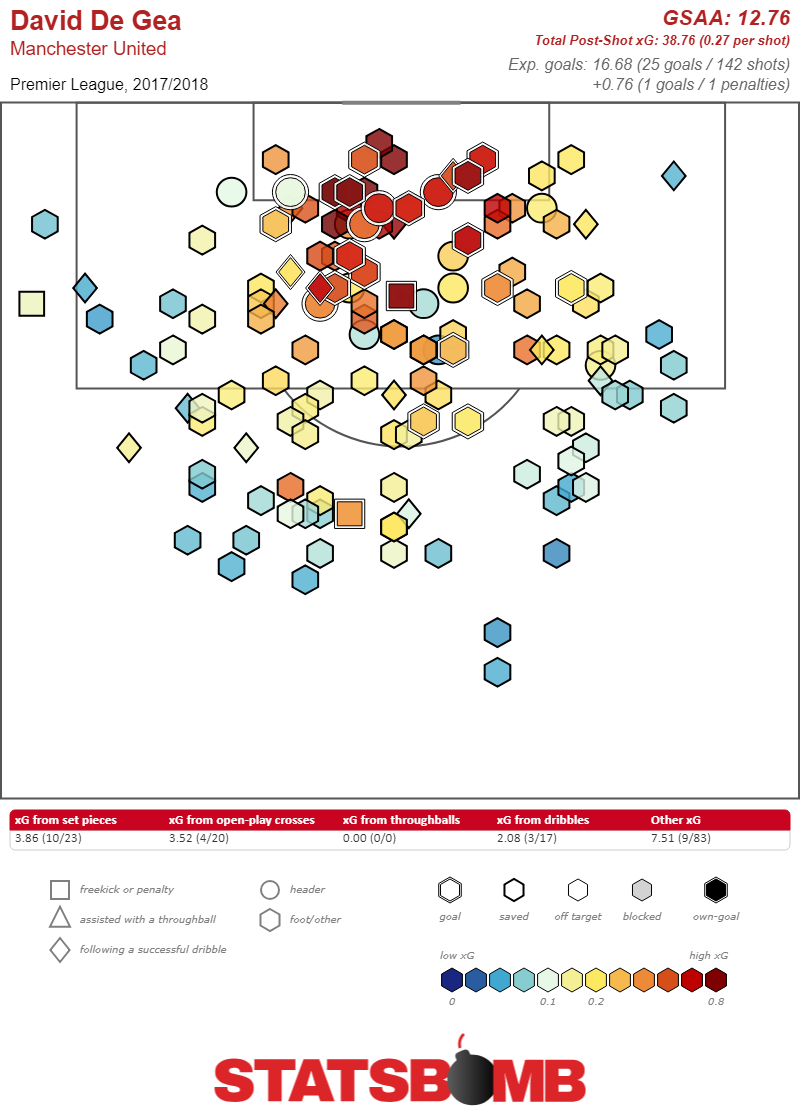
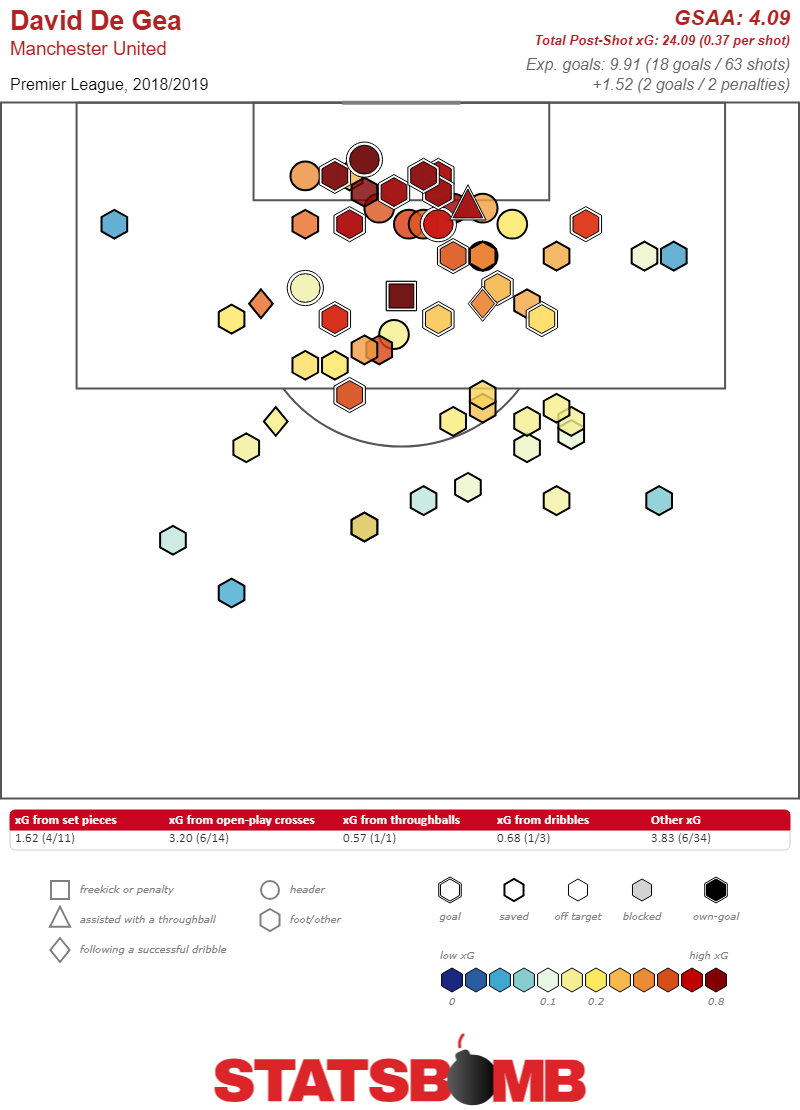
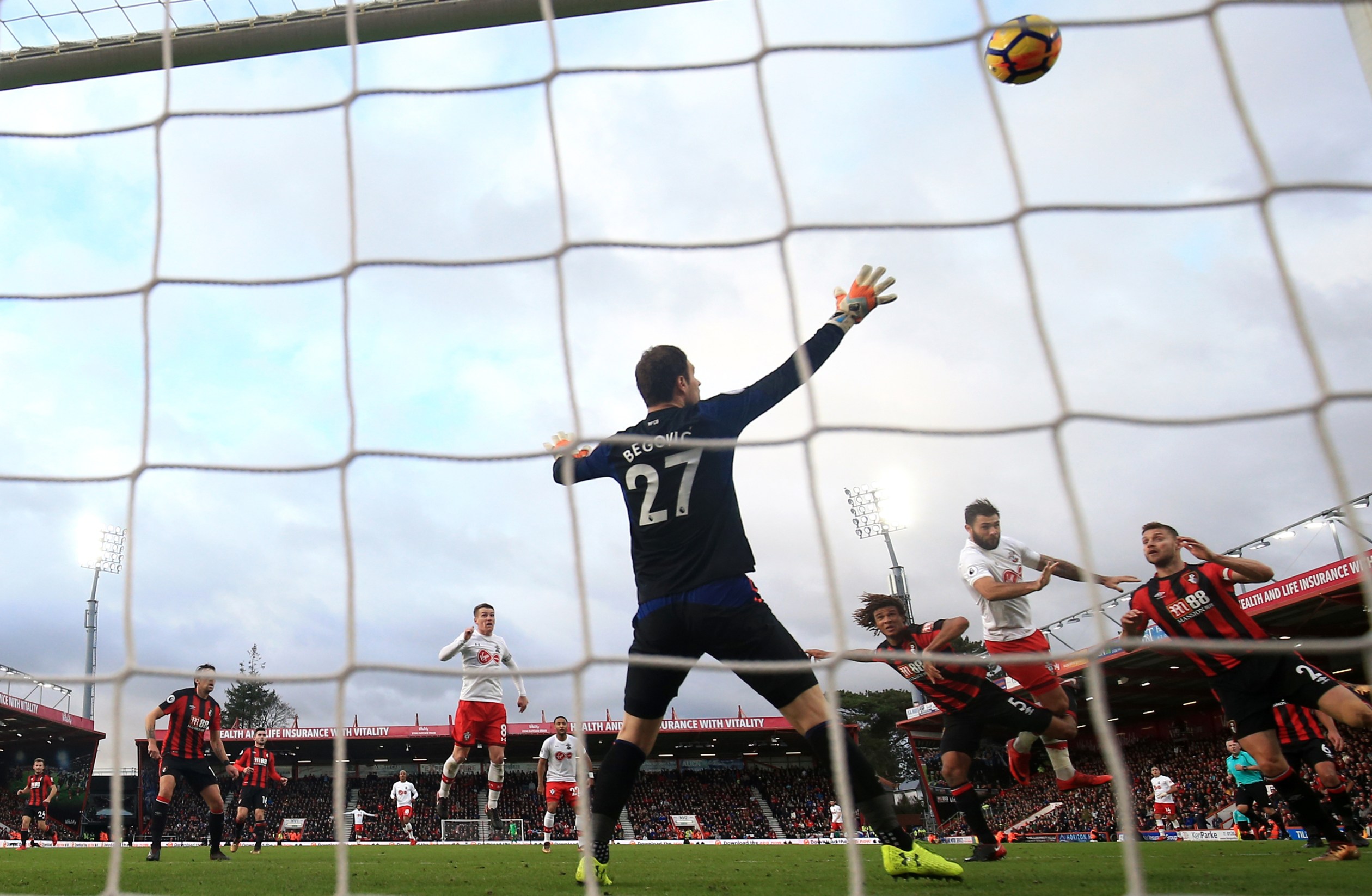
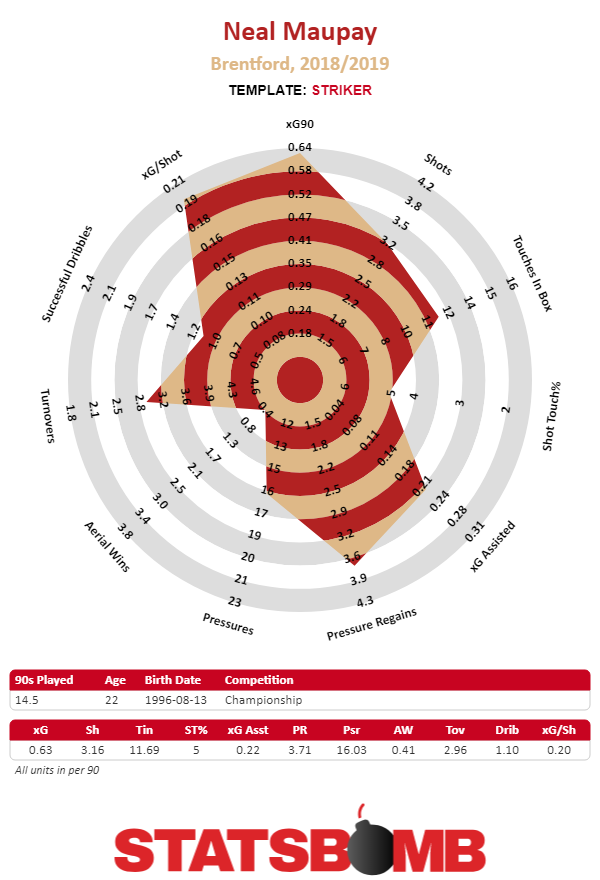
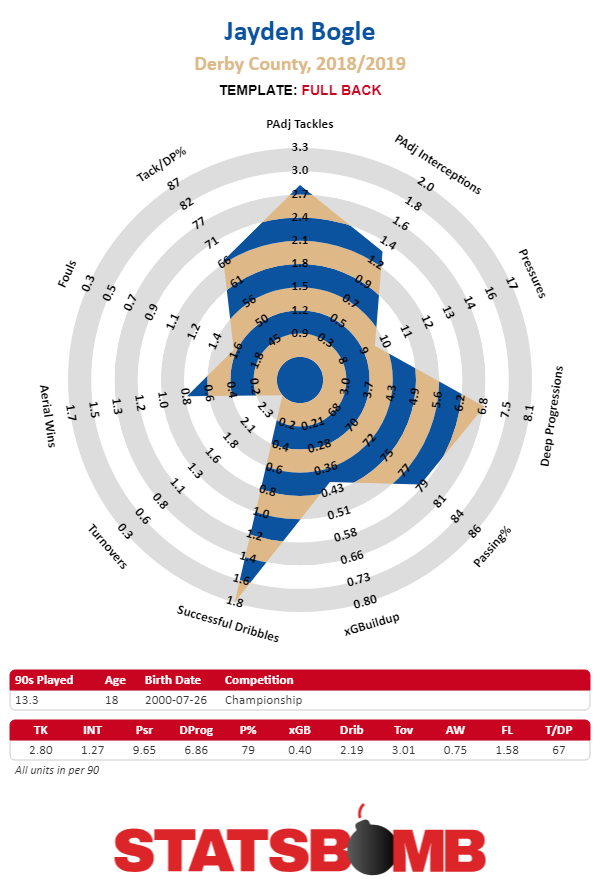 Joe Rodon – Swansea City – Age 21 A name that may be unfamiliar to more casual EFL viewers but definitely one to remember. A direct product of the increasingly successful Swansea academy, Rodon has taken the opportunities afforded to him by progressive head coach Graham Potter. Another who had not played a senior game for his club before the start of the season, Rodon has benefited from a huge reduction in the Swans squad size and a transformation under Potter to a younger more vibrant side. The Welshman has the outstanding blend of a dominating “old-school” center back while having the technical qualities expected of a defender in the modern game. The 21 year old has been integral to Swansea’s successful start to the campaign, amassing 13 appearances and contributing significantly to a defense which is, at the time of writing, the joint second best in the league in terms of goals conceded. Rodon possesses excellent distribution with his passing. He's both accurate and incisive, often starting creative moves from the back. This is particularly vital with the Swans due to the style Potter is trying to implement by moving the ball quickly and vertically through the team. The Championship is an exceptionally physical league for center backs, featuring teams with direct styles with highly physical forwards. This is does not appear to bother Rodon who has the physicality to win duels and be dominant in the air. The Radar below shows Roden compared to the league average for center backs.
Joe Rodon – Swansea City – Age 21 A name that may be unfamiliar to more casual EFL viewers but definitely one to remember. A direct product of the increasingly successful Swansea academy, Rodon has taken the opportunities afforded to him by progressive head coach Graham Potter. Another who had not played a senior game for his club before the start of the season, Rodon has benefited from a huge reduction in the Swans squad size and a transformation under Potter to a younger more vibrant side. The Welshman has the outstanding blend of a dominating “old-school” center back while having the technical qualities expected of a defender in the modern game. The 21 year old has been integral to Swansea’s successful start to the campaign, amassing 13 appearances and contributing significantly to a defense which is, at the time of writing, the joint second best in the league in terms of goals conceded. Rodon possesses excellent distribution with his passing. He's both accurate and incisive, often starting creative moves from the back. This is particularly vital with the Swans due to the style Potter is trying to implement by moving the ball quickly and vertically through the team. The Championship is an exceptionally physical league for center backs, featuring teams with direct styles with highly physical forwards. This is does not appear to bother Rodon who has the physicality to win duels and be dominant in the air. The Radar below shows Roden compared to the league average for center backs. 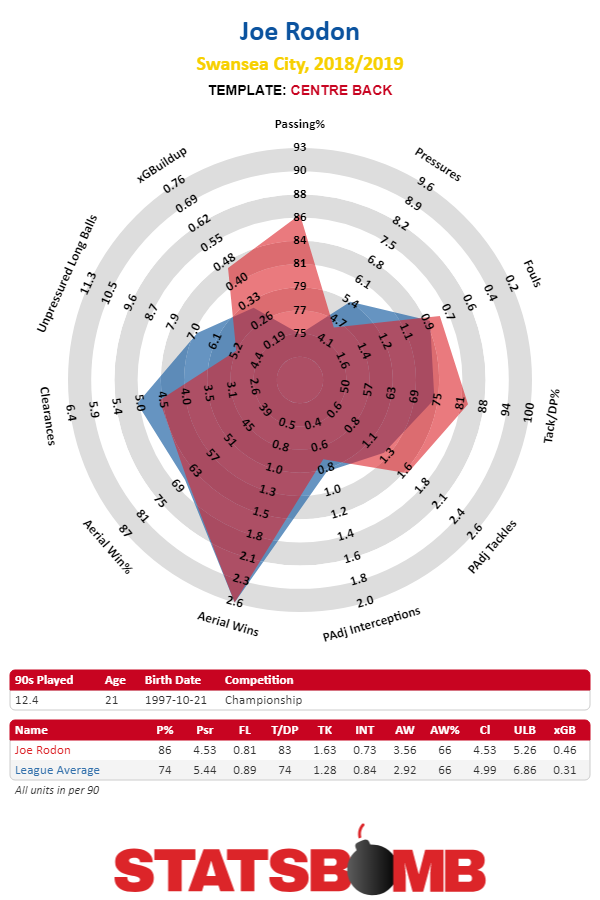 Rodon is performing above the league average for a center back in aerial wins per 90. He is as fiercely combative as he is technically proficient on the ball and is showing fantastic potential that will no doubt raise awareness to clubs in the Premier League. His xGBuildup is highly impressive too (0.46 per 90) showcasing his ability to contribute to good attacks from the back. He's an outstanding young defender performing exceptionally in his first foray into senior football.
Rodon is performing above the league average for a center back in aerial wins per 90. He is as fiercely combative as he is technically proficient on the ball and is showing fantastic potential that will no doubt raise awareness to clubs in the Premier League. His xGBuildup is highly impressive too (0.46 per 90) showcasing his ability to contribute to good attacks from the back. He's an outstanding young defender performing exceptionally in his first foray into senior football. 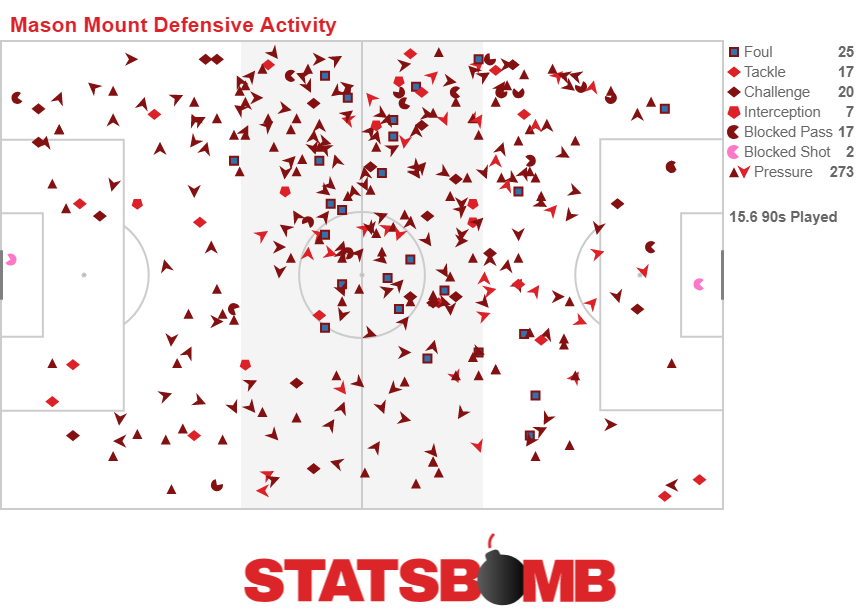 As a creative midfielder Mount also contributes greatly. The Englishman ranks sixth in the league from all attacking midfielders/wingers for open play key passes. The quality of those chances created is also high with Mount producing 0.16 expected assists per 90. Mount has been integral to Derby’s build up play this season, offering variety and incisive passes that have opened up opposition defences. What makes the Chelsea loanaee stand apart is the extra goal scoring threat he offers from that deeper midfield position. Naturally there have been comparisons with Lampard and there may be some merit in that comparison, not in terms of style but output. Mount’s shot map is indicative of his confidence in his own technique. Many of those out of the box shots are from direct free kick attempts. Mount will always back his ability to strike the ball with conviction even from distance. However, it’s those penalty box shots that truly showcase the midfielder’s strengths. Mount carries a goal scoring threat due to his intelligently timed runs into the box. Naturally, some of these shot selections could be hugely improved, Mount’s xG per shot is not of the highest quality. As a young player there will always be improvements to be made and Mount’s decision making is certainly one aspect he will look to better as he progresses. The platform is set though for Mason Mount to be the star of this Derby team this season, and he has had a very encouraging start.
As a creative midfielder Mount also contributes greatly. The Englishman ranks sixth in the league from all attacking midfielders/wingers for open play key passes. The quality of those chances created is also high with Mount producing 0.16 expected assists per 90. Mount has been integral to Derby’s build up play this season, offering variety and incisive passes that have opened up opposition defences. What makes the Chelsea loanaee stand apart is the extra goal scoring threat he offers from that deeper midfield position. Naturally there have been comparisons with Lampard and there may be some merit in that comparison, not in terms of style but output. Mount’s shot map is indicative of his confidence in his own technique. Many of those out of the box shots are from direct free kick attempts. Mount will always back his ability to strike the ball with conviction even from distance. However, it’s those penalty box shots that truly showcase the midfielder’s strengths. Mount carries a goal scoring threat due to his intelligently timed runs into the box. Naturally, some of these shot selections could be hugely improved, Mount’s xG per shot is not of the highest quality. As a young player there will always be improvements to be made and Mount’s decision making is certainly one aspect he will look to better as he progresses. The platform is set though for Mason Mount to be the star of this Derby team this season, and he has had a very encouraging start. 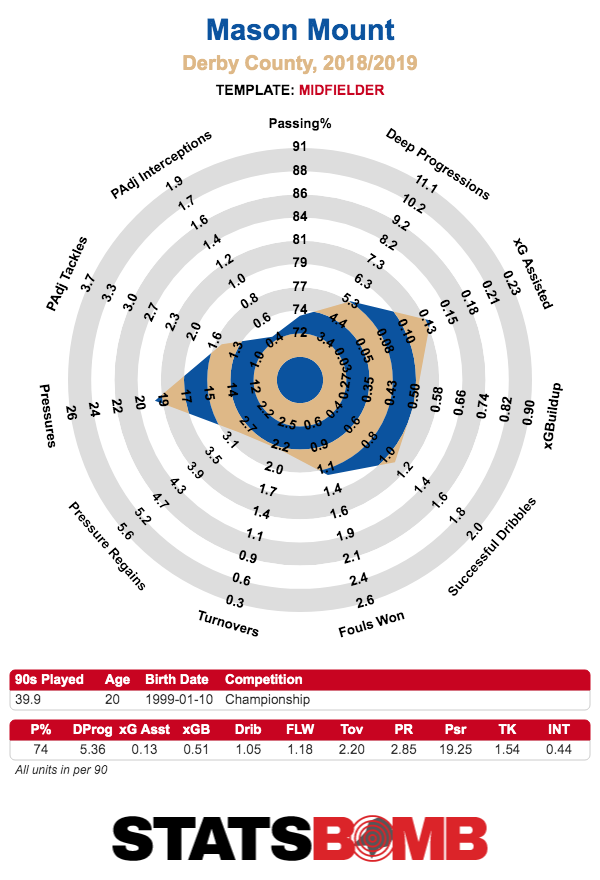 Kalvin Phillips – Leeds United – Age 23 Admittedly this one is slightly against my minimal minutes in the 17-18 season rule, however, for good reason. I am acutely aware that much of the analysis of midfielders centers on their creative contributions or their chance creation. Kalvin Phillips has been the base for Leeds United’s Bielsa ball style this season. Most likely the biggest managerial shock appointment of the summer, Marcelo Bielsa has gone about transforming Leeds into a fluid, high intensity and possession dominant team. However, the glue that holds that side together and gives the likes of Samuel Saiz and Pablo Hernandez opportunity to concentrate on creating is Phillips. Under previous managers Phillips has been a more advanced midfielder but despite having some excellent technical attributes playing the game on the half turn and in tight spaces did not suit his skillset. One of Bielsa’s first acts this season was to drop Phillips further back, making him the team’s primary defensive midfielder and the player to win the ball and give it to those highly creative players further forward. Phillips has responded in fine manor. As the team’s main, and pretty much only, defensive midfielder, Phillips is tactically restrained to those central deep areas for his work, as can be seen from his defensive activity map. Generally not much over the half way line and summing up the role Phillips has been asked to play by Bielsa.
Kalvin Phillips – Leeds United – Age 23 Admittedly this one is slightly against my minimal minutes in the 17-18 season rule, however, for good reason. I am acutely aware that much of the analysis of midfielders centers on their creative contributions or their chance creation. Kalvin Phillips has been the base for Leeds United’s Bielsa ball style this season. Most likely the biggest managerial shock appointment of the summer, Marcelo Bielsa has gone about transforming Leeds into a fluid, high intensity and possession dominant team. However, the glue that holds that side together and gives the likes of Samuel Saiz and Pablo Hernandez opportunity to concentrate on creating is Phillips. Under previous managers Phillips has been a more advanced midfielder but despite having some excellent technical attributes playing the game on the half turn and in tight spaces did not suit his skillset. One of Bielsa’s first acts this season was to drop Phillips further back, making him the team’s primary defensive midfielder and the player to win the ball and give it to those highly creative players further forward. Phillips has responded in fine manor. As the team’s main, and pretty much only, defensive midfielder, Phillips is tactically restrained to those central deep areas for his work, as can be seen from his defensive activity map. Generally not much over the half way line and summing up the role Phillips has been asked to play by Bielsa. 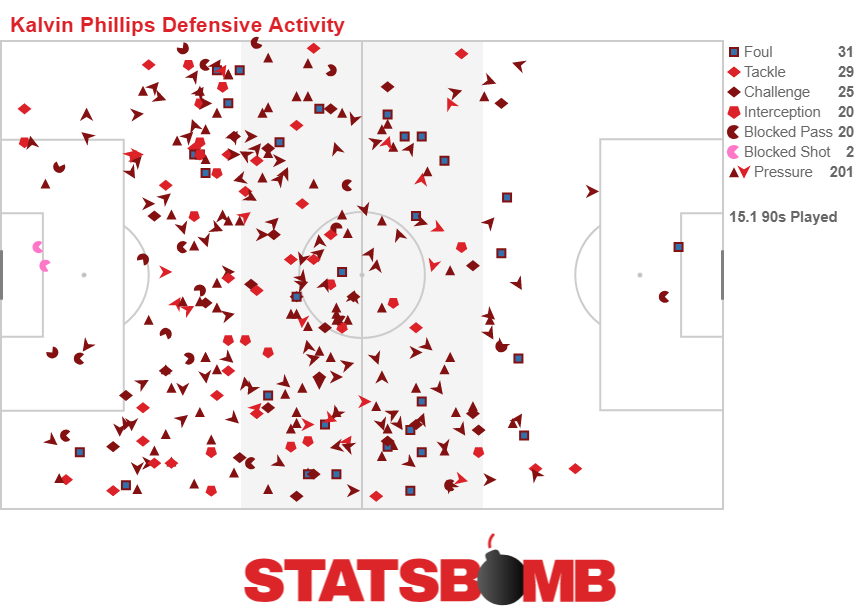 Phillips has excellent distribution with his passing both long and short. He ranks sixth overall for passes per 90 (from all midfielders) and is constantly recycling the ball for Leeds to those in more dangerous areas. Defensively, Phillips ranks
Phillips has excellent distribution with his passing both long and short. He ranks sixth overall for passes per 90 (from all midfielders) and is constantly recycling the ball for Leeds to those in more dangerous areas. Defensively, Phillips ranks 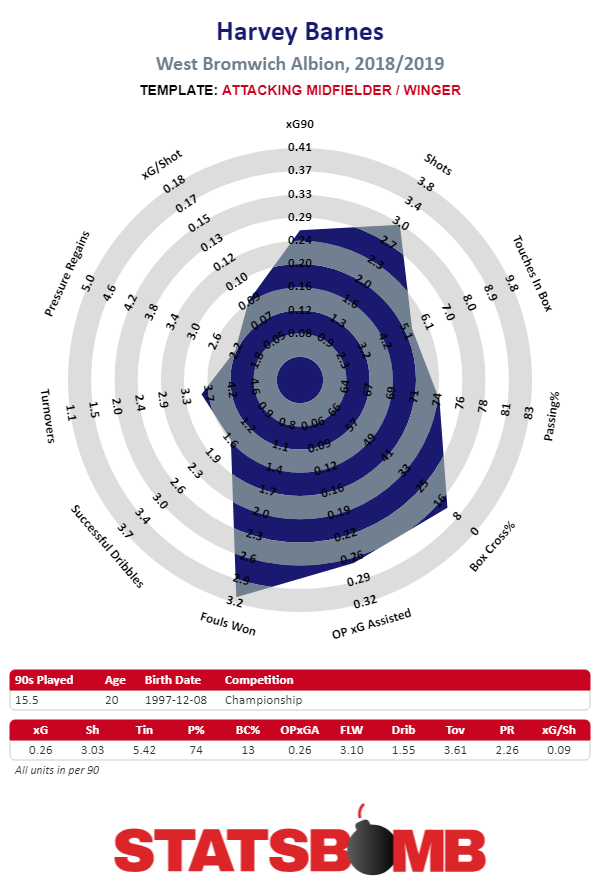 Barnes is one of the best technicians in the league. He has a brilliant touch, a great weight of pass and a very strong shot. His skills make him a standout in a team that possess some of the best attacking talent in the Championship. A look at which players create chances and the quality of those chances sums up his importance to the team.
Barnes is one of the best technicians in the league. He has a brilliant touch, a great weight of pass and a very strong shot. His skills make him a standout in a team that possess some of the best attacking talent in the Championship. A look at which players create chances and the quality of those chances sums up his importance to the team. 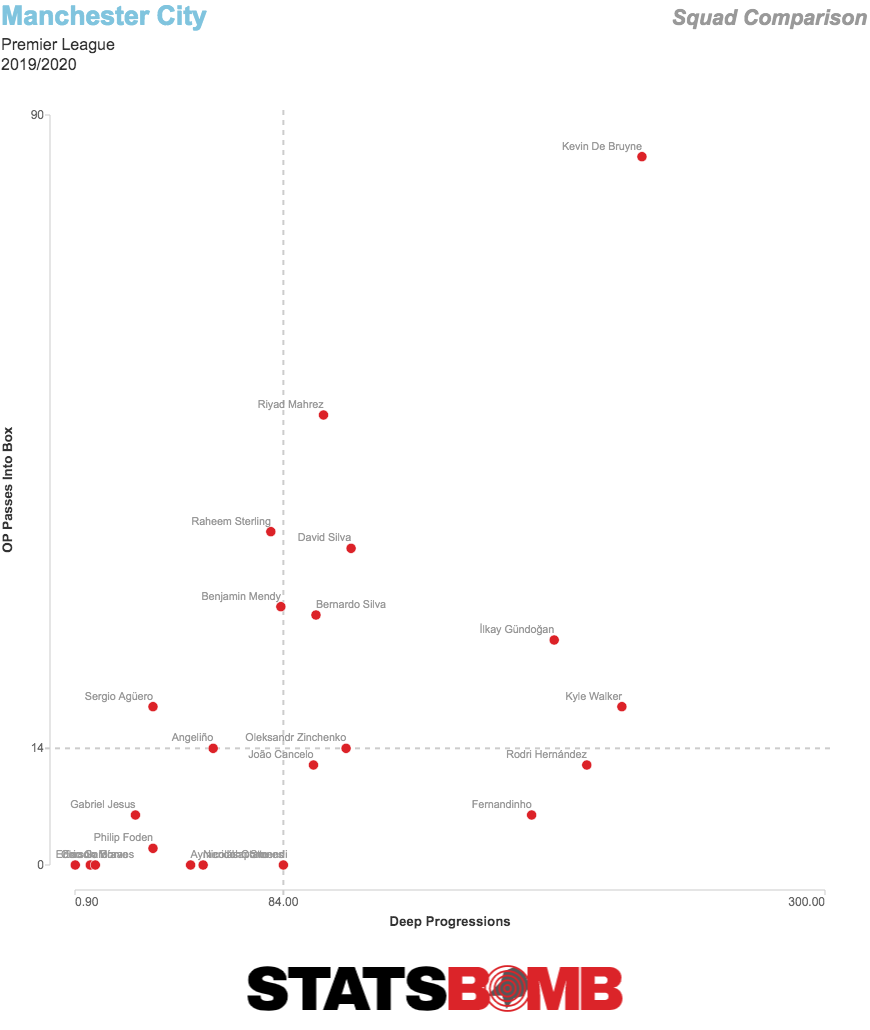 From a numbers perspective, Barnes is far and away the most important player to that West Brom attack. Those other offensive players may look clinical on paper, but Barnes appears to be the imagination and the creative spark that West Brom need to mount a challenge this season. Barnes will be Premier League ready next season, perhaps even now. I also don’t think it will be long before we see him in an England shirt. Leicester have a serious talent on their hands. Neal Maupay – Brentford – Age 22 As I was piecing this together it dawned on me, I haven’t actually included a proper striker. The predator type striker who simply scores goals. That is why I chose to abandon the rule of limiting mins from previous season and just provide a view of the Championship’s current most lethal man. An outstanding, technically gifted striker with pace and dynamic movement, Neal Maupay has all the tools to be a star. He is another of the three players spoken about above who have over 0.2 for xG and xA per 90, even more impressive when you consider the other 2 are wingers and Maupay is a centre forward. This ability to not only be on the end of moves but be involved in creating chances stands Maupay apart from many of his peers at this level. Ranking as the highest player in the league for passes and touches in the opposition box, the Frenchman is more than just a finisher. Brentford have long been revered for many aspects of their operation. In football style terms they play almost clinically and with an analytical approach, trying to create the highest quality chances for their forward players. This results in a lot of six yard box attempts on goal and consequently a LOT of goals. Maupay’s shot map shows the benefits of playing in such a system.
From a numbers perspective, Barnes is far and away the most important player to that West Brom attack. Those other offensive players may look clinical on paper, but Barnes appears to be the imagination and the creative spark that West Brom need to mount a challenge this season. Barnes will be Premier League ready next season, perhaps even now. I also don’t think it will be long before we see him in an England shirt. Leicester have a serious talent on their hands. Neal Maupay – Brentford – Age 22 As I was piecing this together it dawned on me, I haven’t actually included a proper striker. The predator type striker who simply scores goals. That is why I chose to abandon the rule of limiting mins from previous season and just provide a view of the Championship’s current most lethal man. An outstanding, technically gifted striker with pace and dynamic movement, Neal Maupay has all the tools to be a star. He is another of the three players spoken about above who have over 0.2 for xG and xA per 90, even more impressive when you consider the other 2 are wingers and Maupay is a centre forward. This ability to not only be on the end of moves but be involved in creating chances stands Maupay apart from many of his peers at this level. Ranking as the highest player in the league for passes and touches in the opposition box, the Frenchman is more than just a finisher. Brentford have long been revered for many aspects of their operation. In football style terms they play almost clinically and with an analytical approach, trying to create the highest quality chances for their forward players. This results in a lot of six yard box attempts on goal and consequently a LOT of goals. Maupay’s shot map shows the benefits of playing in such a system. 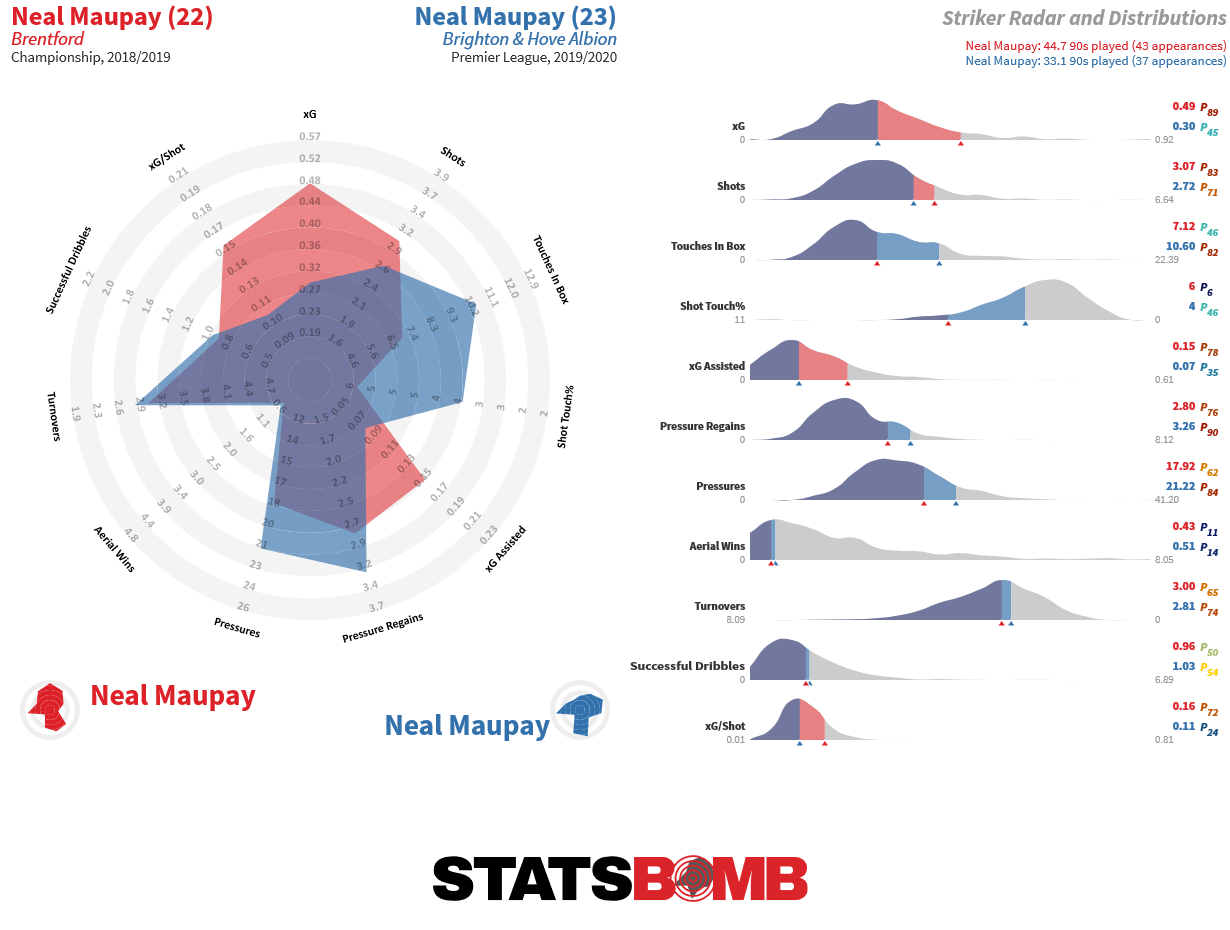 A striker is naturally judged on goals and how clinical they are at taking their chances. Despite the fact Maupay is the top scorer in the league one of the criticisms against him is that he can miss the odd easy chance, which quite frankly can be true of all great strikers. However, his conversion rate is still high which shows he can be a clinical striker. An overall non penalty xG of 8.77 with nine non penalty goals shows that Maupay is indeed clinical enough especially at this level to score goals on a consistent basis if presented with chances. His radar speaks for itself in terms of the quality of the player in general.
A striker is naturally judged on goals and how clinical they are at taking their chances. Despite the fact Maupay is the top scorer in the league one of the criticisms against him is that he can miss the odd easy chance, which quite frankly can be true of all great strikers. However, his conversion rate is still high which shows he can be a clinical striker. An overall non penalty xG of 8.77 with nine non penalty goals shows that Maupay is indeed clinical enough especially at this level to score goals on a consistent basis if presented with chances. His radar speaks for itself in terms of the quality of the player in general. 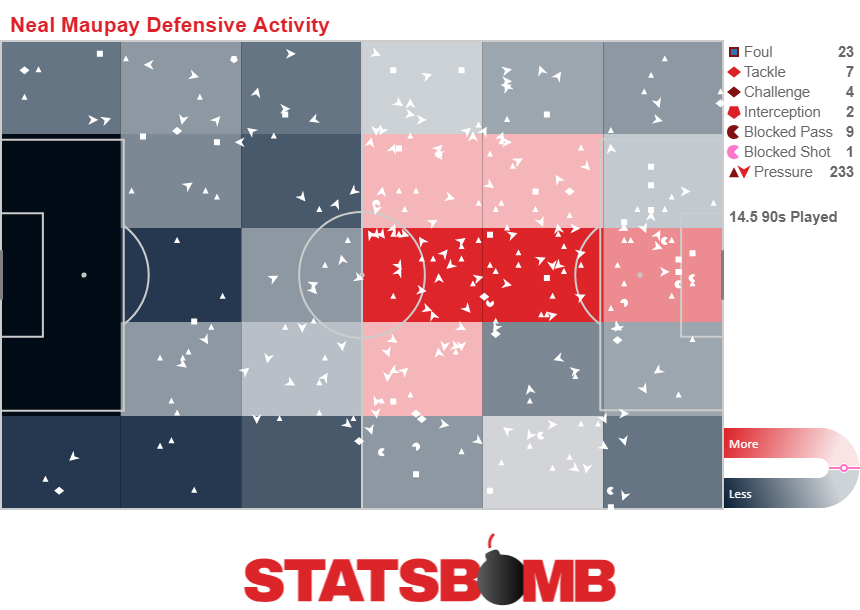 The majority of Maupay’s actions and those with the highest intensity and frequency just happen to occur centrally and on the last line of defence or on the last midfielder. Happy coincidence? I highly doubt it. Brentford are an exceptionally intelligent side and they will be well aware that regains in this area will have a high % of a good quality chance on goal. Maupay is key to this strategy with his work rate, athleticism and mobility key factors in setting the tone for his team mates. Without doubt one of the long line of exceptional talents bought to the EFL by Brentford, however Maupay could easily be the best. Thanks for reading guys! I hope I have peaked some interest in one of the most intriguing and brilliantly chaotic leagues in the world of football!
The majority of Maupay’s actions and those with the highest intensity and frequency just happen to occur centrally and on the last line of defence or on the last midfielder. Happy coincidence? I highly doubt it. Brentford are an exceptionally intelligent side and they will be well aware that regains in this area will have a high % of a good quality chance on goal. Maupay is key to this strategy with his work rate, athleticism and mobility key factors in setting the tone for his team mates. Without doubt one of the long line of exceptional talents bought to the EFL by Brentford, however Maupay could easily be the best. Thanks for reading guys! I hope I have peaked some interest in one of the most intriguing and brilliantly chaotic leagues in the world of football!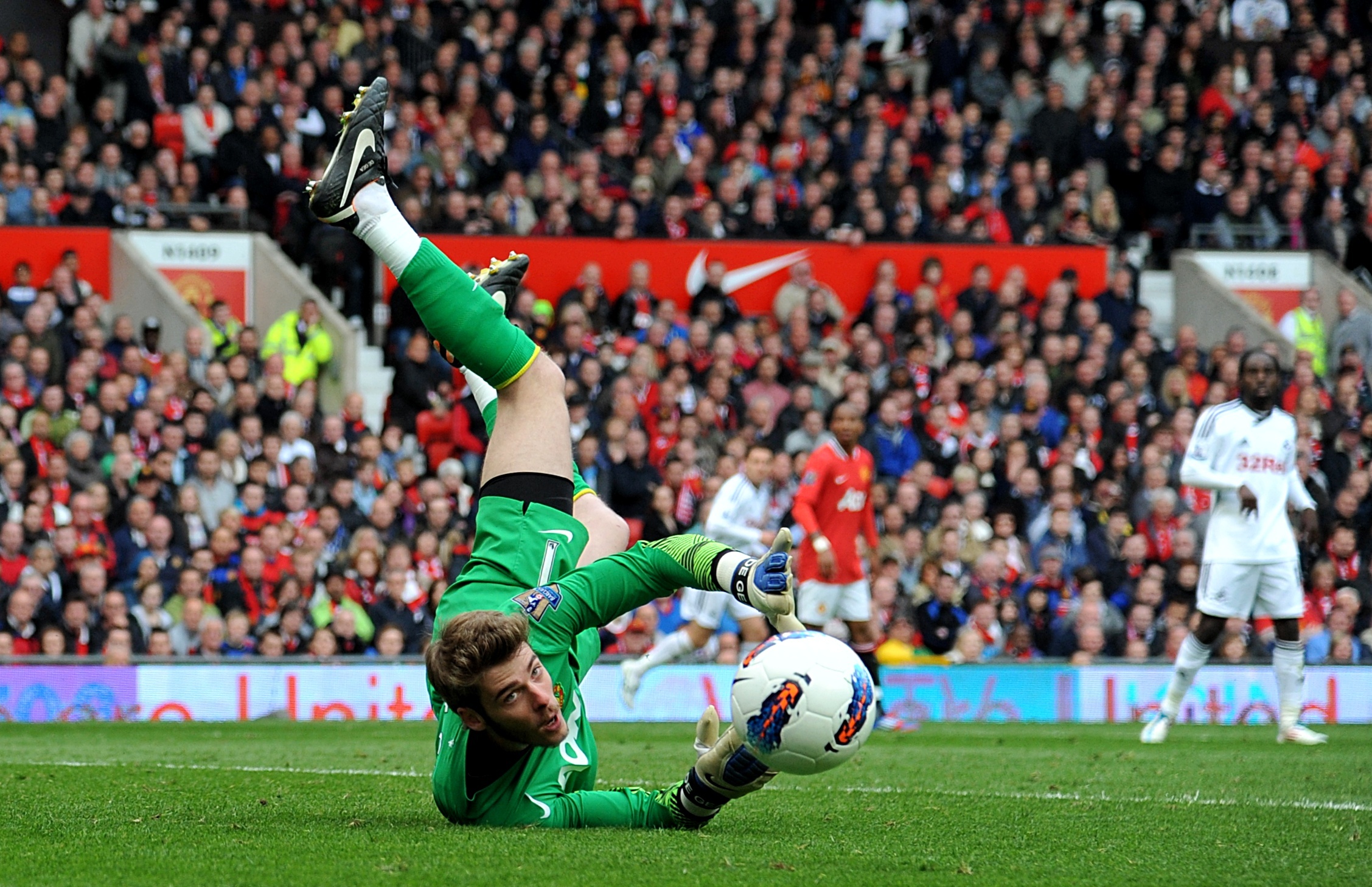

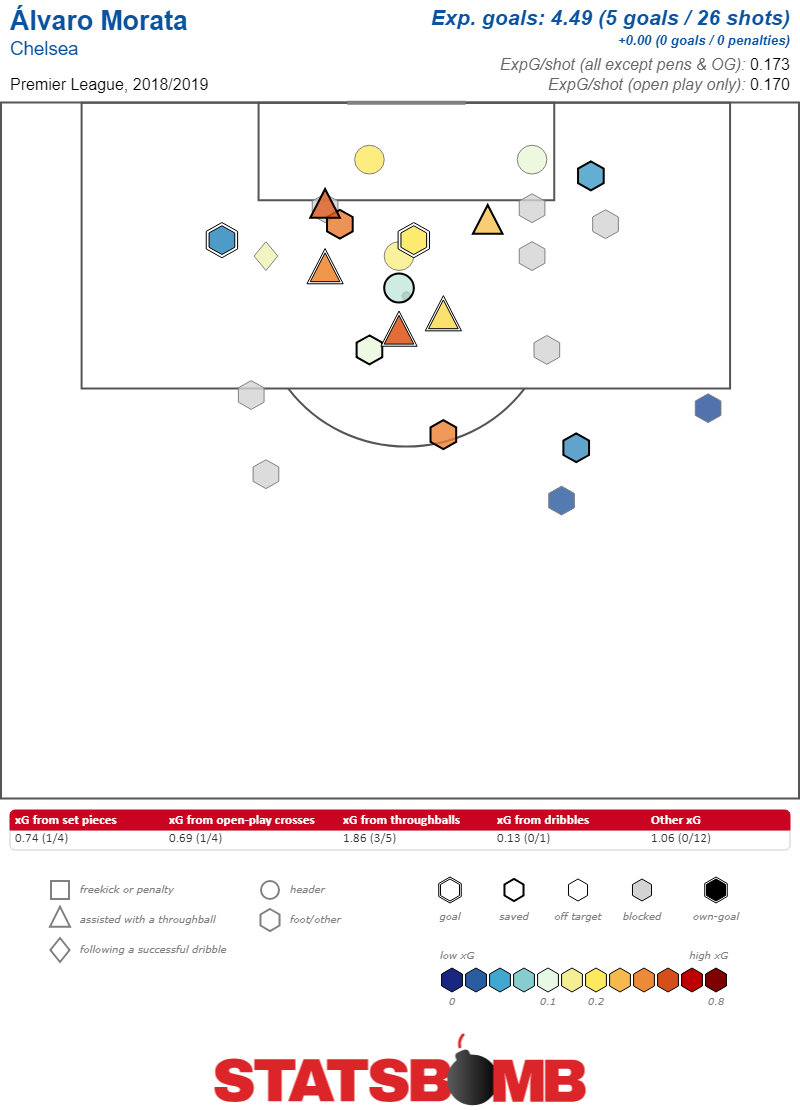 None of this is to say that there aren’t things about Morata to criticize. His scoring rate is great, but historically he’s never put up a monster season. He’s only hit double digits twice, and maxed out at 14. He’s never been the primary striker on a team for a whole season, and when he was given the opportunity last year he faded badly (perhaps assisted by injury) down the stretch. At 26 years old it’s certainly fair to winder when, and if, Morata will translate those impressive scoring rates into an entire season of success. Also, at least under Maurizio Sarri’s management, scoring goals is about all that Morata does. While over the course of his career he’s been at least competent at linking play around the penalty box, last year he had six assists, this season his goal scoring is all he’s bringing to the table. He’s not impressive in the air, his hold-up play seems to rely on falling down and asking for fouls, and while he’s a decently effective presser, he’s not a particularly active one. Compare him with Olivier Giroud and what you find is one player who does a lot and scores some goals, and another player who does a little, but scores a lot.
None of this is to say that there aren’t things about Morata to criticize. His scoring rate is great, but historically he’s never put up a monster season. He’s only hit double digits twice, and maxed out at 14. He’s never been the primary striker on a team for a whole season, and when he was given the opportunity last year he faded badly (perhaps assisted by injury) down the stretch. At 26 years old it’s certainly fair to winder when, and if, Morata will translate those impressive scoring rates into an entire season of success. Also, at least under Maurizio Sarri’s management, scoring goals is about all that Morata does. While over the course of his career he’s been at least competent at linking play around the penalty box, last year he had six assists, this season his goal scoring is all he’s bringing to the table. He’s not impressive in the air, his hold-up play seems to rely on falling down and asking for fouls, and while he’s a decently effective presser, he’s not a particularly active one. Compare him with Olivier Giroud and what you find is one player who does a lot and scores some goals, and another player who does a little, but scores a lot. 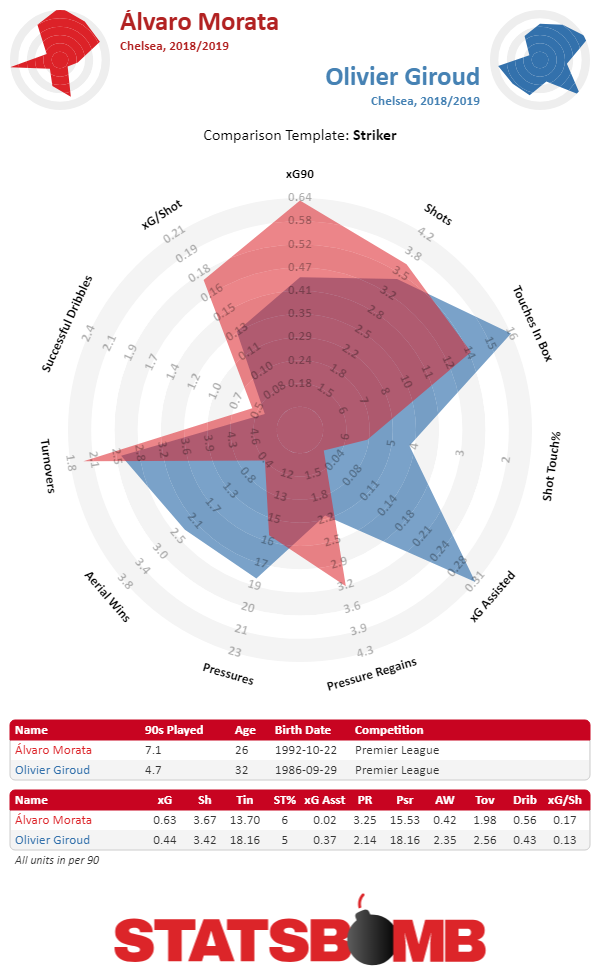 The question isn’t about whether Morata is good or bad, the question is how good does Morata have to be at the things he is good at to make it worth carrying the thing’s he’s bad at. Right now, he’s clearly on the plus side of the equation. In the minutes he’s played he’s a top two expected goal scorer and a top four goal scorer. But, at some level, even as he remains a good goal scorer, everything else would make him not worth the goals. If he was the seventh best goal scorer in the league would it be worth it? The tenth best? There’s no definitive answer here, and the question is complicated by all sorts of other factors. Having a goal scorer is more important if nobody else is scoring goals. Tactically, if Hazard is supposed to be taking shots, rather than creating them, that would impact the decision. If the midfield is supposed to be generating goals by running beyond the striker into the box then Morata’s contributions become less valuable, and Giroud’s get more important. These are all things to consider when deciding how worthy Morata is of a starting spot. Judging Morata is important, it’s equally important to make sure we’re judging him by the right criteria. He’s good at scoring goals, not bad. He’s bad at things that aren’t goal scoring. How good does he have to be at the first thing to balance out the second thing? That’s the question that managers get paid the big bucks to answer. Lucas Torreira’s Boring Passing The opposite phenomenon is going on with Torreira. Torreira looks like a strong signing for Arsenal. He’s done a great job at bringing stability to the middle of the pitch. He’s made midfield partner Granit Xhaka look less like a defensive liability, covered for the fullbacks and just generally been an all around calming and effective presence in Arsenal’s midfield. That’s a skill that’s especially salient for a team whose midfield has consistently gotten overrun for a generation. He’s also not a particularly creative passer. First, the good stuff. He’s ninth in the league in interceptions adjusted for possession with 1.96 and tackles adjusted for possession with 2.95. If your looking for Arsenal’s ball winner, it’s Torreira.
The question isn’t about whether Morata is good or bad, the question is how good does Morata have to be at the things he is good at to make it worth carrying the thing’s he’s bad at. Right now, he’s clearly on the plus side of the equation. In the minutes he’s played he’s a top two expected goal scorer and a top four goal scorer. But, at some level, even as he remains a good goal scorer, everything else would make him not worth the goals. If he was the seventh best goal scorer in the league would it be worth it? The tenth best? There’s no definitive answer here, and the question is complicated by all sorts of other factors. Having a goal scorer is more important if nobody else is scoring goals. Tactically, if Hazard is supposed to be taking shots, rather than creating them, that would impact the decision. If the midfield is supposed to be generating goals by running beyond the striker into the box then Morata’s contributions become less valuable, and Giroud’s get more important. These are all things to consider when deciding how worthy Morata is of a starting spot. Judging Morata is important, it’s equally important to make sure we’re judging him by the right criteria. He’s good at scoring goals, not bad. He’s bad at things that aren’t goal scoring. How good does he have to be at the first thing to balance out the second thing? That’s the question that managers get paid the big bucks to answer. Lucas Torreira’s Boring Passing The opposite phenomenon is going on with Torreira. Torreira looks like a strong signing for Arsenal. He’s done a great job at bringing stability to the middle of the pitch. He’s made midfield partner Granit Xhaka look less like a defensive liability, covered for the fullbacks and just generally been an all around calming and effective presence in Arsenal’s midfield. That’s a skill that’s especially salient for a team whose midfield has consistently gotten overrun for a generation. He’s also not a particularly creative passer. First, the good stuff. He’s ninth in the league in interceptions adjusted for possession with 1.96 and tackles adjusted for possession with 2.95. If your looking for Arsenal’s ball winner, it’s Torreira. 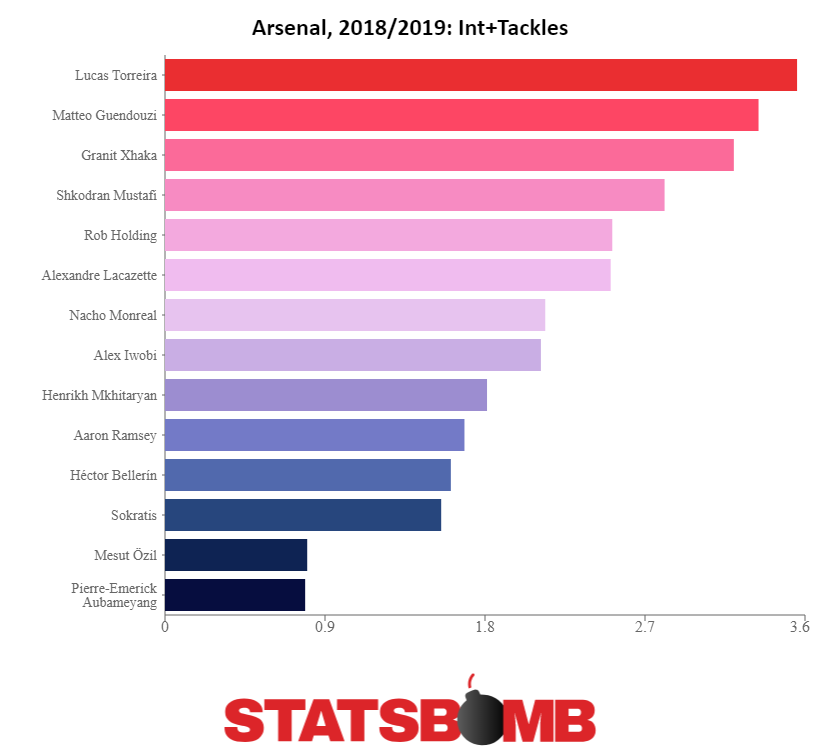 He primarily patrols the center of the pitch, but also covers the right flank, which is particularly important given manager Unai Emery’s insistence on having his fullbacks bomb forward in order to create attacking chances.
He primarily patrols the center of the pitch, but also covers the right flank, which is particularly important given manager Unai Emery’s insistence on having his fullbacks bomb forward in order to create attacking chances. 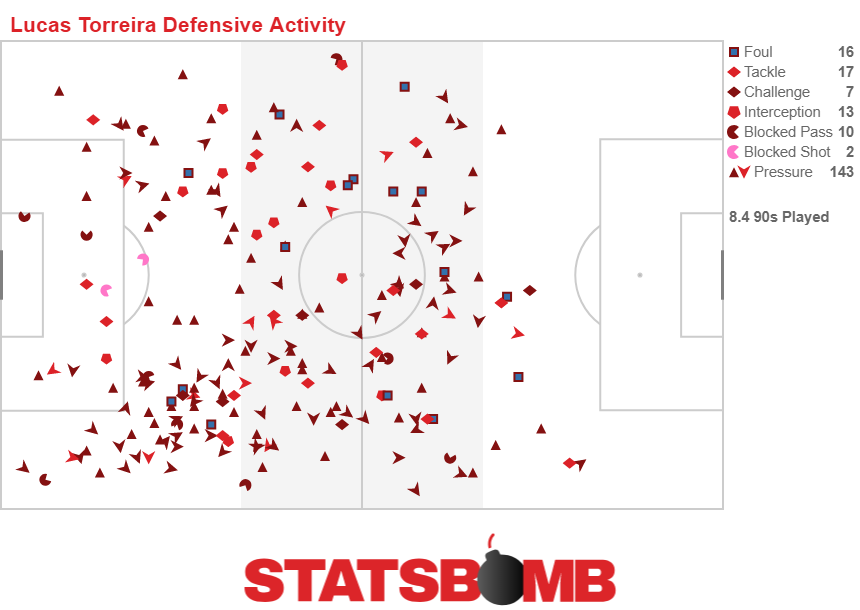 These are all great and important and necessary skills for Arsenal to have in midfield. They need these things. They need them so much that it’s absolutely reasonable to overlook Torreira’s lack of creativity on the ball. But, that doesn’t mean that Torreira’s lack of creativity isn’t a real part of his game. He only notches 4.86 deep progression per 90, well down below the team’s creators in midfield.
These are all great and important and necessary skills for Arsenal to have in midfield. They need these things. They need them so much that it’s absolutely reasonable to overlook Torreira’s lack of creativity on the ball. But, that doesn’t mean that Torreira’s lack of creativity isn’t a real part of his game. He only notches 4.86 deep progression per 90, well down below the team’s creators in midfield. 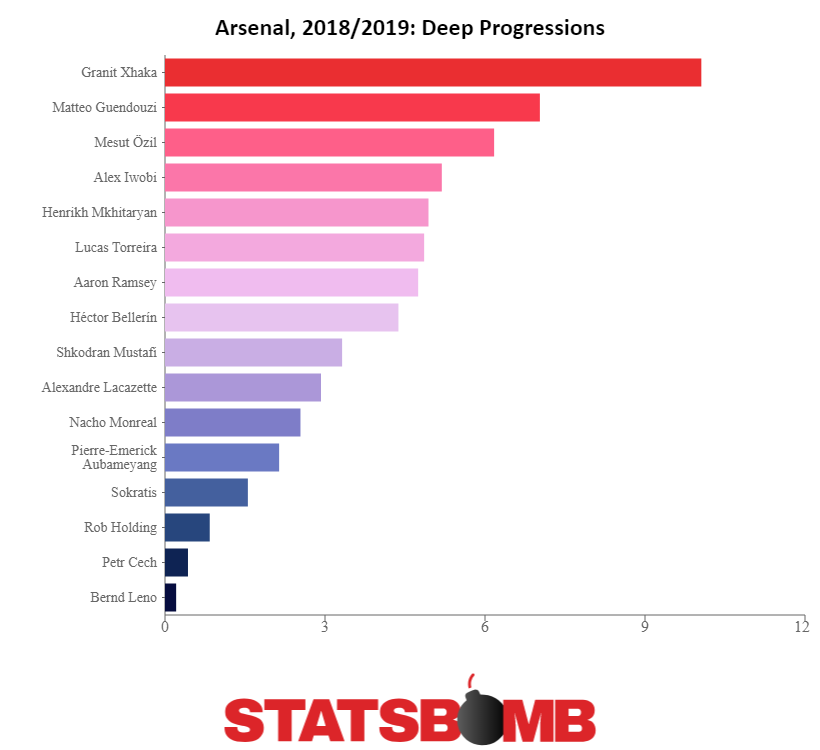 On the other hand, with a 90% completion rate he’s the most consistent passer on the team. Combine the two and what you have is a player who is very conservative on the ball. Looking at some recent performances it’s clear that the lion’s share of Torreira’s passing is sideways and backwards. Here he is against Crystal Palace (skipping past the strong defense of Liverpool last weekend to give Torreira the benefit of the doubt).
On the other hand, with a 90% completion rate he’s the most consistent passer on the team. Combine the two and what you have is a player who is very conservative on the ball. Looking at some recent performances it’s clear that the lion’s share of Torreira’s passing is sideways and backwards. Here he is against Crystal Palace (skipping past the strong defense of Liverpool last weekend to give Torreira the benefit of the doubt). 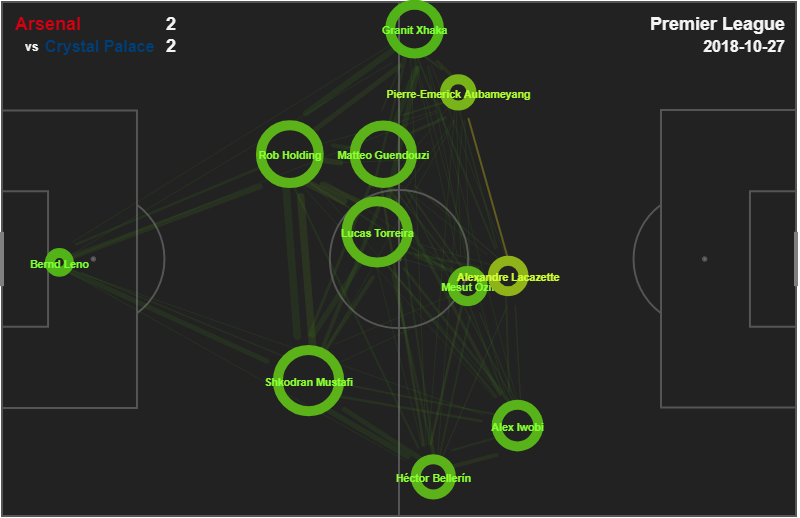 His most frequent passes were 11 to Shkodran Mustafi, 11 to Granit Xhaka (playing leftback, which admittedly makes everything weird) and 10 to Rob Holding. The week before against Leicester City, in a much better attacking performance, the pattern was the same with 15 to Mustafi, 12 to Xhaka and 11 to Bellerin. None of this is bad. There are lots of very successful defensive midfielders who profile this way. Win the ball back, settle possession with safe passes, be an option to rotate possession, and don’t make stupid mistakes. That’s the recipe for a very good player. It’s also somebody who needs to be surrounded with passing to succeed. Torreira has slotted comfortably into Arsenal’s side in no small part because he’s playing lots of minutes with Xhaka next to him and Mesut Ozil in front of him, two players who do just about all the creative passing you could ever need. If you took those players out of the lineup, and replaced them with, say, somebody like Aaron Ramsey, then Torreira would look different. Ramsey’s skill comes from getting forward without the ball, and having a creative passer feed it to him. Put Torreira in that role and all of a sudden Arsenal would begin to struggle. In the same way that Chelsea have to reckon with exactly how much scoring they need from Morata to overshadow all the things he can’t do, Arsenal have to consider how little passing they can abide from Torreira before that becomes a liability for their attack. Given the current makeup of the squad the answer to that question is that they need basically no passing from Torreira, and they’ll still be able to move the ball. That’s part of what’s allowed Torreira to seem so successful so quickly. Should that squad chance, however, then they might be forced to reconsider. There’s a lot more to life than whether a player is good or bad. What’s more important is figuring out what a player is good and bad at, and how often they are forced to use those skill given the system they’re playing in. Those are the questions that color how we think about players like Morata and Torreira, and how perceptions of them can, and will change over time. Morata’s a good goal scorer, but sometimes that doesn’t matter. Torreira’s not a good creative passer, and that hasn’t mattered yet either. Understanding that goes a long way to help figuring out everything else.
His most frequent passes were 11 to Shkodran Mustafi, 11 to Granit Xhaka (playing leftback, which admittedly makes everything weird) and 10 to Rob Holding. The week before against Leicester City, in a much better attacking performance, the pattern was the same with 15 to Mustafi, 12 to Xhaka and 11 to Bellerin. None of this is bad. There are lots of very successful defensive midfielders who profile this way. Win the ball back, settle possession with safe passes, be an option to rotate possession, and don’t make stupid mistakes. That’s the recipe for a very good player. It’s also somebody who needs to be surrounded with passing to succeed. Torreira has slotted comfortably into Arsenal’s side in no small part because he’s playing lots of minutes with Xhaka next to him and Mesut Ozil in front of him, two players who do just about all the creative passing you could ever need. If you took those players out of the lineup, and replaced them with, say, somebody like Aaron Ramsey, then Torreira would look different. Ramsey’s skill comes from getting forward without the ball, and having a creative passer feed it to him. Put Torreira in that role and all of a sudden Arsenal would begin to struggle. In the same way that Chelsea have to reckon with exactly how much scoring they need from Morata to overshadow all the things he can’t do, Arsenal have to consider how little passing they can abide from Torreira before that becomes a liability for their attack. Given the current makeup of the squad the answer to that question is that they need basically no passing from Torreira, and they’ll still be able to move the ball. That’s part of what’s allowed Torreira to seem so successful so quickly. Should that squad chance, however, then they might be forced to reconsider. There’s a lot more to life than whether a player is good or bad. What’s more important is figuring out what a player is good and bad at, and how often they are forced to use those skill given the system they’re playing in. Those are the questions that color how we think about players like Morata and Torreira, and how perceptions of them can, and will change over time. Morata’s a good goal scorer, but sometimes that doesn’t matter. Torreira’s not a good creative passer, and that hasn’t mattered yet either. Understanding that goes a long way to help figuring out everything else.